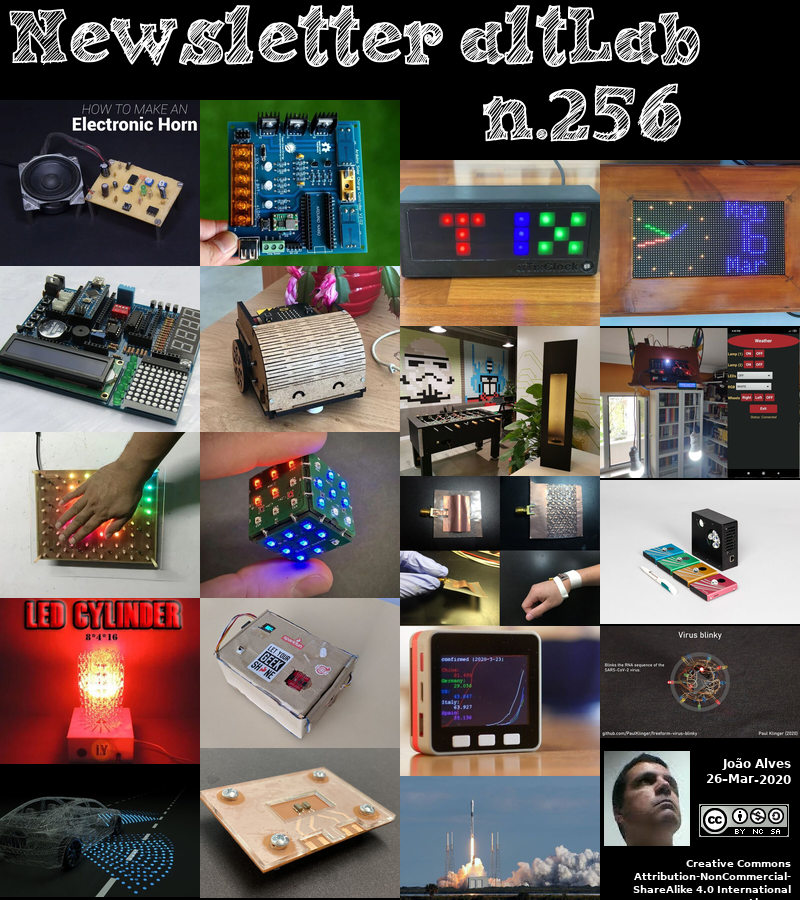2020-03-26 - Nº 256
Editorial
Esta é a Newsletter Nº 256 que se apresenta com o mesmo formato que as anteriores. Se gostar da Newsletter partilhe-a!
Todas as Newsletters encontram-se indexadas no link.
Esta Newsletter tem os seguintes tópicos:
Faz hoje anos que nascia, em 1913, o matemático húngaro Paul Erdös. Ele foi um dos principais especialistas em matemática do século XX e foi pioneiro nos campos da teoria dos números e da combinatória. O tipo de matemática em que ele trabalhava era problemas simples de entender, mas notoriamente difíceis de resolver. Aos 20 anos, ele descobriu uma prova para um teorema clássico da teoria dos números que afirma que há sempre pelo menos um número primo entre qualquer número inteiro positivo e seu dobro. Nos anos 30, ele estudou na Inglaterra e mudou-se para os EUA no final dos anos 30, quando suas origens judaicas tornaram impossível o retorno à Hungria. Afectado pelo McCarthyism na década de 1950, ele passou boa parte dos próximos dez anos em Israel. Onde escreveu centenas de artigos que fizeram dele um dos matemáticos mais prolíficos da história.
Faz também anos hoje que nascia, em 1916, o bioquímico norte-americano Christian B. Anfinsen. Ele recebeu (conjuntamente com Stanford Moore e William H. Stein) o Prémio Nobel de Química de 1972 por pesquisas sobre a forma e a estrutura primária da ribonuclease (a enzima que hidrolisa o RNA). A ribonuclease é composta por uma cadeia de peptídeo único (uma molécula que consiste em duas ou mais moléculas de aminoácidos unidas por uma ligação peptídica) dobrada numa esfera unida por quatro ligações dissulfureto. Estas ligações podem ser quebradas para que a enzima fique desnaturada (colapsando), perdendo todas as suas propriedades enzimáticas. Anfinsen descobriu que a sua forma e, consequentemente, seu poder enzimático poderiam ser restaurados e concluiu que a ribonuclease deve reter todas as informações sobre a sua configuração dentro dos seus aminoácidos.
Por fim, faz anos hoje que nascia, em 1973, o cientista da computação e empreendedor norte-americano Larry Page. Ele era estudante de graduação quando co-fundou a Google, Inc. com Sergey Brin, enquanto trabalhava no mesmo doutoramento. Eles desenvolveram as suas ideias para o mecanismo de busca na época e fundaram a empresa em 1998, com apoio financeiro de investidores, familiares e amigos. Page era o presidente de produtos da empresa. O sucesso foi tão grande que, em 19 de Agosto de 2004, a empresa fez uma oferta pública inicial de acções (IPO) para aumentar o capital para crescer ainda mais. Eventualmente, o seu valor excedeu o de Disney, McDonals e General Motors juntos.
Na Newsletter desta semana apresentamos diversos projetos de maker. É apresentado o livro "SIGNAL" da Texas assim como as revistas HackSpace 29 e MagPI 92 de Abril e as revistas newelectronics de 10 e 24 de Março.
 João Alves ([email protected])
João Alves ([email protected])
O conteúdo da Newsletter encontra-se sob a licença  Creative Commons Attribution-NonCommercial-ShareAlike 4.0 International License.
Creative Commons Attribution-NonCommercial-ShareAlike 4.0 International License.
Outras Notícias

STMicroelectronics Introduces Standalone VBUS-Powered Controller for 5V USB-C Charging Applications
"The STUSB4500L from STMicroelectronics is a small-footprint addition to the Company’s USB-C controller IC family designed and certified for pure 5V sink-only applications. All mandatory features to use the USB-C connector as a 5V universal power plug are integrated, allowing designers to implement USB-C charging solutions quickly and easily without studying the standard or writing code. USB-C is rapidly becoming established as a replacement for Micro-B or Mini-B plugs, for both power and data connections, as it offers the advantages of reversible orientation and greater robustness — up to 10,000 connect/disconnect cycles. ST’s new USB-C controller IC is a stand-alone, plug-and-play interface product, targeting low-voltage applications such as Bluetooth speakers, computer accessories, Wi-Fi access points, point-of-sale equipment, LED lighting, and USB dongles. It can also be used for powering equipment such as single-board computers and hardware development kits. The controller IC runs without additional code and requires no external support from the microcontroller, which eases adoption of the USB-C connector standard by saving time-consuming design work." [...]
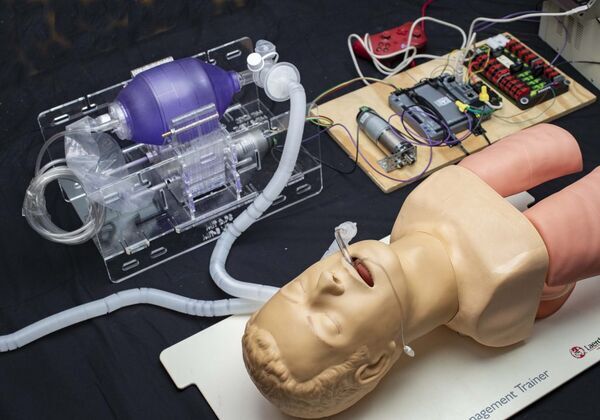
MIT Emergency Ventilator (E-Vent) Project
"We are one of several teams who recognized the challenges faced by Italian physicians, and are working to find a solution to the anticipated global lack of ventilators. In the US alone, the COVID-19 pandemic may cause ventilator shortages on the order of 300,000-700,000 units (CDC Pandemic Response Plans). These could present on a national scale within weeks, and are already being felt in certain areas. An increase in conventional ventilator production is very likely to fall short and with significant associated cost (paywall warning). Almost every bed in a hospital has a manual resuscitator (Ambu-Bag) nearby, available in the event of a rapid response or code where healthcare workers maintain oxygenation by squeezing the bag. Automating this appears to be the simplest strategy that satisfies the need for low-cost mechanical ventilation, with the ability to be rapidly manufactured in large quantities." [...]

Revisiting Decades-Old Voyager 2 Data, Scientists Find One More Secret
"Eight and a half years into its grand tour of the solar system, NASA’s Voyager 2 spacecraft was ready for another encounter. It was Jan. 24, 1986, and soon it would meet the mysterious seventh planet, icy-cold Uranus. Over the next few hours, Voyager 2 flew within 50,600 miles (81,433 kilometers) of Uranus’ cloud tops, collecting data that revealed two new rings, 11 new moons and temperatures below minus 353 degrees Fahrenheit (minus 214 degrees Celsius). The dataset is still the only up-close measurements we have ever made of the planet. Three decades later, scientists reinspecting that data found one more secret. Unbeknownst to the entire space physics community, 34 years ago Voyager 2 flew through a plasmoid, a giant magnetic bubble that may have been whisking Uranus’s atmosphere out to space." [...]
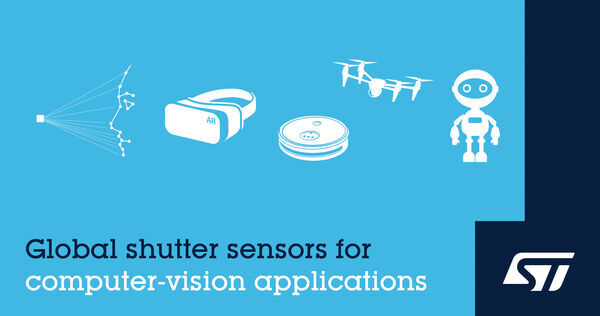
STMicroelectronics Powers Next-Generation Computer-Vision Applications with High-Performance Global-Shutter Image Sensors
"STMicroelectronics (NYSE: STM), a global semiconductor leader serving customers across the spectrum of electronics applications, is enabling the next generation of smart computer-vision applications with new high-speed image sensors that use “global shutter” – the preferred mode for capturing distortion-free images when the scene is moving or when near-infrared illumination is needed. ST’s advanced image-sensor process technologies enable class-leading pixel size while offering both high sensitivity and low crosstalk. The combination of silicon process innovation and advanced pixel architecture allows a smaller sensor pixel array on the top die, while keeping more silicon area on the bottom die to increase digital-processing capabilities and features. The new sensors are the VD55G0 with 640 x 600 pixels and the VD56G3 with 1.5 Mpixels (1124 x 1364). Measuring 2.6mm x 2.5mm and 3.6mm x 4.3mm, respectively, VD55G0 and VD56G3 are the smallest on the market in relation to resolution. Low pixel-to-pixel crosstalk at all wavelengths, specifically near-infrared, ensures high contrast for superior image clarity." [...]
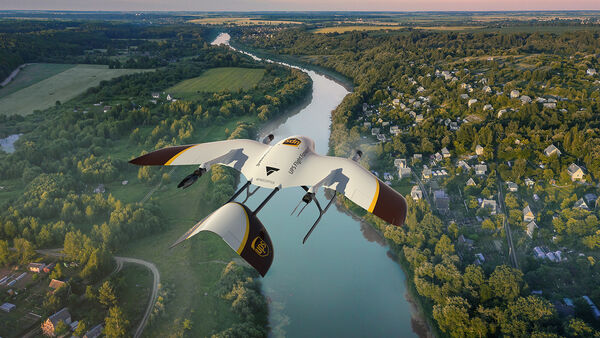
UPS Flight Forward And Wingcopter To Develop Versatile New Drone Fleet
"UPS (NYSE:UPS) drone delivery subsidiary UPS Flight Forward (UPSFF) today said it would collaborate with German drone-maker Wingcopter to develop the next generation of package delivery drones for a variety of use cases in the United States and internationally. UPS chose Wingcopter, a transport drone pioneer, for its unmanned aircraft technology and its track record in delivering a variety of goods over long distances in multiple international settings. “Drone delivery is not a one-size-fits-all operation,” said Bala Ganesh, vice president of the UPS Advanced Technology Group. “Our collaboration with Wingcopter helps pave the way for us to start drone delivery service in new use-cases. UPS Flight Forward is building a network of technology partners to broaden our unique capability to serve customers and extend our leadership in drone delivery.” As part of this collaboration – UPSFF’s first new relationship with a drone manufacturer since its formation – both companies will work toward earning regulatory certification for a Wingcopter unmanned aircraft to make commercial delivery flights in the United States. It also is a critical step toward building a diverse fleet of drones with varying capabilities to meet even more potential customer needs." [...]
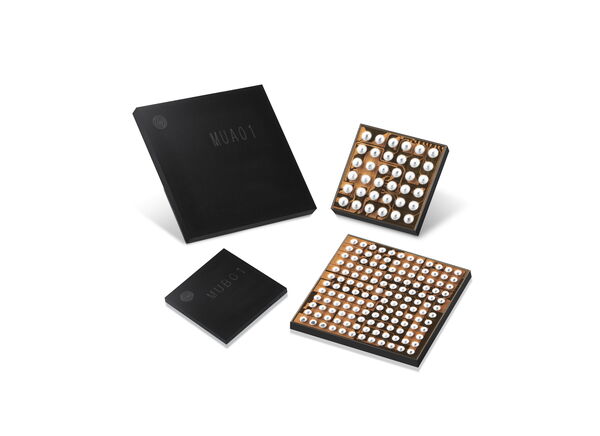
Samsung Introduces Industry’s First All-in-One Power ICs Optimized for Wireless Earbuds
"The new PMICs integrate multiple discrete components in one chip to make room for longer battery life and more efficient designs in today’s True Wireless Stereo devices Samsung Electronics, a world leader in advanced semiconductor technology, today announced the industry’s first all-in-one power management integrated circuits (PMIC), MUA01 and MUB01, optimized for today’s True Wireless Stereo (TWS) devices. Unlike wireless headphones, TWS earbuds have no wire that connects the two earpieces. Without the connecting wires, TWS devices present users with more freedom in movement and range on their day-to-day activities. However, like other mobile devices, long battery life and small form factors are key requirements for these wireless earbuds. “TWS earbuds present elevated listening experiences for more users and the trend is rapidly expanding the mobile accessory market, creating new opportunities for device manufacturers,” said Dong-ho Shin, senior vice president of System LSI marketing at Samsung Electronics. “Samsung’s industry-first, all-in-one power management solutions optimized for TWS devices will allow manufacturers to craft new applications with greater flexibility.” The MUA01 and MUB01 PMICs, respectively, have been designed for the charging case and the earbuds, and are one-of-a-kind fully-integrated solutions optimized for TWS devices." [...]
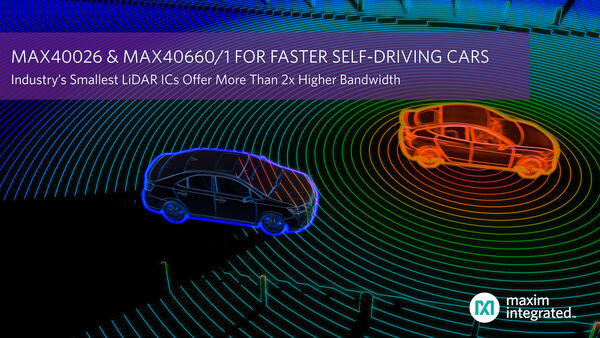
Industry’s Smallest LiDAR ICs by Maxim Integrated Offer More Than 2x Higher Bandwidth for Faster Self-Driving Cars
"Tiny, high-bandwidth transimpedance amplifier and high-speed comparator add 32 additional channels to a LiDAR module with the same overall solution size Designers of automotive self-driving systems can now enable higher-speed autonomous driving through the industry's fastest and smallest Light Detection and Ranging (LiDAR) ICs from Maxim Integrated Products, Inc. (NASDAQ: MXIM). Compared to the closest competitive solution, the MAX40026 high-speed comparator and the MAX40660/MAX40661 high-bandwidth transimpedance amplifiers enable 10mph (15km/h) faster autonomous driving at highway speeds by providing more than 2x higher bandwidth and accommodating 32 additional channels (128 vs. 96) to a LiDAR module within the same module size. With automotive self-driving systems evolving from 35mph to 65mph and beyond, LiDAR sensors are playing an increasing role in the fusion of vehicle sensors for their ability to provide accurate distance measurement of objects. With more than twice the bandwidth and the ability to accommodate 33 percent more channels within the same LiDAR module size compared to the closest competitor, the MAX40660/MAX40661 transimpedance amplifiers (TIAs) provide optical receiver designers with higher-resolution images that enable faster autonomous driving systems. The system size of the MAX40026 high-speed comparator plus the MAX40660/1 TIAs is 5mm2 smaller than the closest competitive solution, which allows developers to fit far more channels into space-constrained vehicle platforms. These ICs meet the stringent safety requirements of the automotive industry with AEC-Q100 qualification, enhanced electrostatic discharge (ESD) performance and failure modes, effects and diagnostic analysis (FMEDA) to support ISO 26262 certification at the system level." [...]

SpaceX gets FCC license for 1 million satellite-broadband user terminals
"SpaceX now licensed to deploy 1 million of what Musk calls "UFOs on a stick." SpaceX has received government approval to deploy up to 1 million user terminals in the United States for its Starlink satellite-broadband constellation. SpaceX asked the Federal Communications Commission for the license in February 2019, and the FCC announced its approval in a public notice last week. The FCC approval is for "a blanket license for the operation of up to 1,000,000 fixed earth stations that will communicate with [SpaceX's] non-geostationary orbit satellite system." The license is good for 15 years. As SpaceX's application said, the earth stations are "user terminals [that] employ advanced phased-array beam-forming and digital-processing technologies to make highly efficient use of Ku-band spectrum resources by supporting highly directive, steered antenna beams that track the system's low-Earth orbit satellites."" [...]
Ciência e Tecnologia
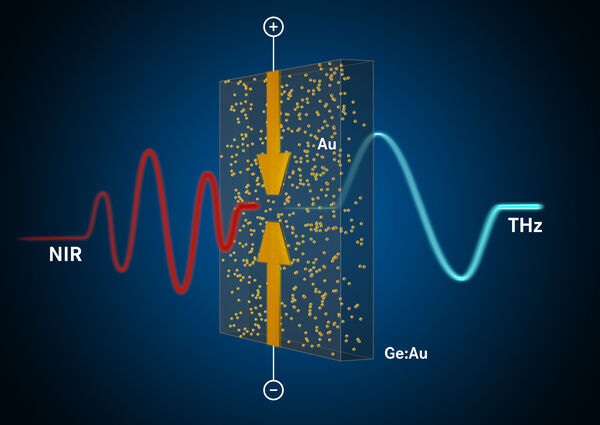
Peppered with gold
"Terahertz waves are becoming ever more important in science and technology. They enable us to unravel the properties of future materials, test the quality of automotive paint and screen envelopes. But generating these waves is still a challenge. A team at Helmholtz-Zentrum Dresden-Rossendorf (HZDR), TU Dresden and the University of Konstanz has now made significant progress. The researchers have developed a germanium component that generates short terahertz pulses with an advantageous property: the pulses have an extreme broadband spectrum and thus deliver many different terahertz frequencies at the same time. As it has been possible to manufacture the component employing methods already used in the semiconductor industry, the development promises a broad range of applications in research and technology, as the team reports in the journal Light: Science & Applications (DOI: 10.1038/s41377-020-0265-4)." [...]
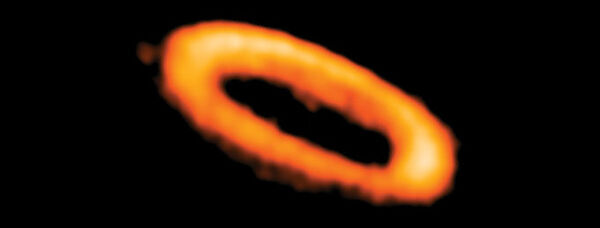
The Strange Orbits of ‘Tatooine’ Planetary Disks
"Astronomers using the Atacama Large Millimeter/submillimeter Array (ALMA) have found striking orbital geometries in protoplanetary disks around binary stars. While disks orbiting the most compact binary star systems share very nearly the same plane, disks encircling wide binaries have orbital planes that are severely tilted. These systems can teach us about planet formation in complex environments. In the last two decades, thousands of planets have been found orbiting stars other than our Sun. Some of these planets orbit two stars, just like Luke Skywalker’s home Tatooine. Planets are born in protoplanetary disks – we now have wonderful observations of these thanks to ALMA – but most of the disks studied so far orbit single stars." [...]
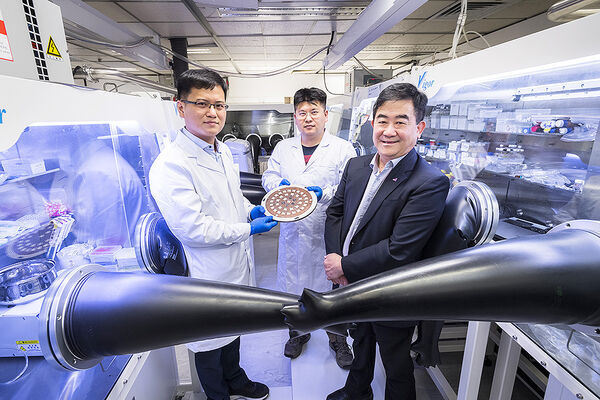
Novel solar cells promise new opportunities
"Pioneering research led by scientists at City University of Hong Kong (CityU) has led to the development of the most efficient all-inorganic inverted perovskite solar cells (PVSCs) to date. This novel approach will contribute to addressing the global energy issue in a cost-effective manner. PVSCs are a type of solar cells produced by metal halide perovskite materials, which are an attractive option for the renewable energy technologies due to their high efficiency and low manufacturing cost. The all-inorganic inverted PVSCs developed in the year-long research project have achieved a recorded efficiency of 16.1% and a certified efficiency of 15.6%. This level of efficiency has great potential to enhance the stability and practical value of PVSCs. The findings were published in Nature Communications under the title “Highly efficient all-inorganic perovskite solar cells with suppressed non-radiative recombination by a Lewis base”." [...]
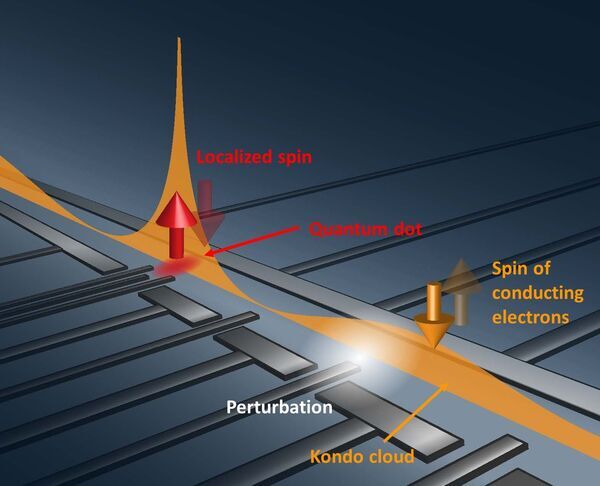
World’s first experimental observation of a Kondo cloud
"Physicists have been trying to observe the quantum phenomenon Kondo cloud for many decades. An international research team comprising a scientist from City University of Hong Kong (CityU) has recently developed a novel device that successfully measures the length of the Kondo cloud and even allows for controlling the Kondo cloud. The findings can be regarded as a milestone in condensed matter physics and may provide insights for understanding the multiple impurity systems, such as high-temperature superconductors. Dr Ivan Valerievich Borzenets, Assistant Professor at CityU’s Department of Physics, collaborated with scientists from Germany, Japan, and Korea on achieving this breakthrough. Their research findings were published in the latest issue of the highly prestigious scientific journal Nature, titled “Observation of the Kondo Screening Cloud”. What is the Kondo cloud?" [...]
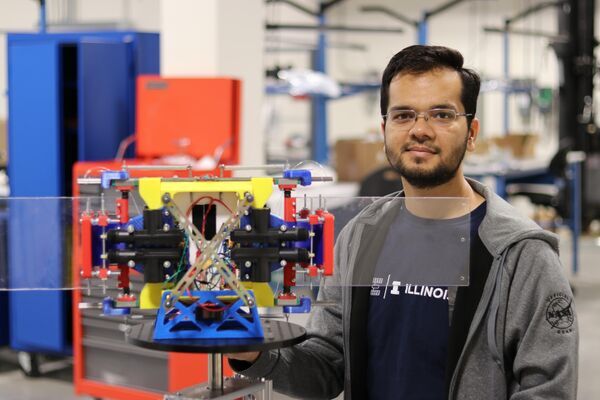
New Patented Invention Stabilizes, Rotates Satellites
"Many satellites are in space to take photos. But a vibrating satellite, like a camera in shaky hands, can’t get a sharp image. Pointing it at a precise location to take a photo or perform another task, is another important function that requires accuracy. Vedant, an aerospace engineering doctoral student at the University of Illinois at Urbana-Champaign was working on a way to eliminate vibrations on a satellite when he discovered his invention could also rotate the satellite. “We developed, with NASA”s Jet Propulsion Lab, a way to cancel out the vibrations of a satellite by vibrating the solar panels in the opposite direction--active noise cancellation,” Vedant said. “After developing a mathematical model and using random inputs, I realized I could make the satellite move away from the original resting point, which was unexpected." [...]
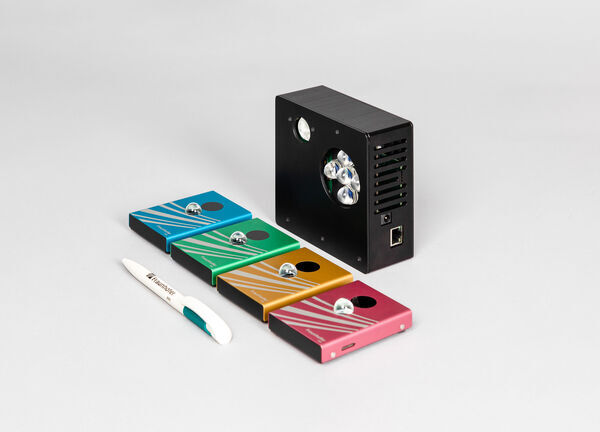
Fraunhofer HHI introduces new USB LiFi modules with up to 1 Gbit/s
"The Fraunhofer Heinrich Hertz Institute HHI was the first to succeed in developing a USB-operated LiFi system with low power consumption, thus achieving the world's highest data rate of up to 1 Gbit/s in a mobile LiFi end device. LiFi enables fast mobile communication for indoor areas. In a LiFi transmission, the unlicensed optical spectrum is used for wireless data transmission. In contrast to radio, light can be controlled and restricted to certain rooms, thus protecting the data with a very high degree of security against unauthorised access and external interference. The Fraunhofer HHI develops LiFi systems with a focus on application in target environments such as backhaul, industry as well as for conferences and classrooms. Overall, the Institute has more than 20 years of experience in the field of LiFi and offers the compact USB LiFi modules for pilot installations, field tests and licensing also for industrial product development." [...]
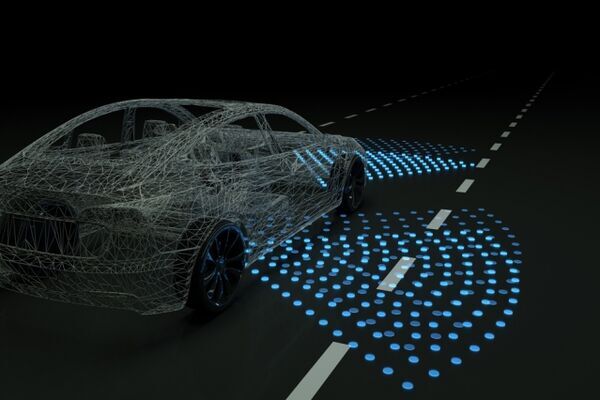
System trains driverless cars in simulation before they hit the road
"Using a photorealistic simulation engine, vehicles learn to drive in the real world and recover from near-crash scenarios. A simulation system invented at MIT to train driverless cars creates a photorealistic world with infinite steering possibilities, helping the cars learn to navigate a host of worse-case scenarios before cruising down real streets. Control systems, or “controllers,” for autonomous vehicles largely rely on real-world datasets of driving trajectories from human drivers. From these data, they learn how to emulate safe steering controls in a variety of situations. But real-world data from hazardous “edge cases,” such as nearly crashing or being forced off the road or into other lanes, are — fortunately — rare. Some computer programs, called “simulation engines,” aim to imitate these situations by rendering detailed virtual roads to help train the controllers to recover." [...]
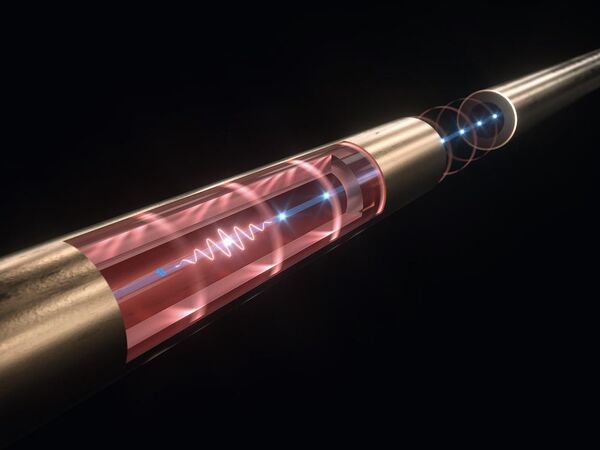
Tiny double accelerator recycles energy
"A team of DESY scientists has built a miniature double particle accelerator that can recycle some of the laser energy fed into the system to boost the energy of the accelerated electrons a second time. The device uses narrowband terahertz radiation which lies between infrared and radio frequencies in the electromagnetic spectrum, and a single accelerating tube is just 1.5 centimetres long and 0.79 millimetres in diameter. Dongfang Zhang and his colleagues from the Center for Free-Electron laser Science (CFEL) at DESY present their experimental accelerator in the journal Physical Review X. The miniature size of the device is possible due to the short wavelength of terahertz radiation. “Terahertz-based accelerators have emerged as promising candidates for next-generation compact electron sources,” explains Franz Kärtner, Lead Scientist at DESY and head of the CFEL group that built the device. Scientists have successfully experimented with terahertz accelerators before, which could enable applications where large particle accelerators are just not feasible or necessary." [...]

Innovative new fabrication approach for reprogrammable photonic circuits
"New approach featured on the front cover of the latest issue of Advanced Optical Materials. Photonic integrated circuits (PICs) – the light-based equivalent of electronic ICs – carry signals via visible and infrared light. Optical materials with adjustable refractive index are essential for reconfigurable PICs as they allow for more accurate manipulation of light passing through the materials, leading to better PIC performance. Current programmable PIC concepts suffer from issues such as volatility and/or high optical signal losses – both of which negatively affect a material’s ability to keep its programmed state. Using hydrogenated amorphous silicon (a-Si:H), a material used in thin-film silicon solar cells, and the associated Staebler-Wronski effect (SWE), which describes how the optical properties of a-Si:H can be changed via light exposure or heating, researchers at Eindhoven University of Technology have designed a new PIC fabrication process that addresses the shortfalls of current techniques and could lead to the emergence of universal programmable PICs. IMPROVING PIC YIELD According to Oded Raz, Associate Professor at the Department of Electrical Engineering and research lead for this project, this approach could be of paramount importance for the field of PICs." [...]
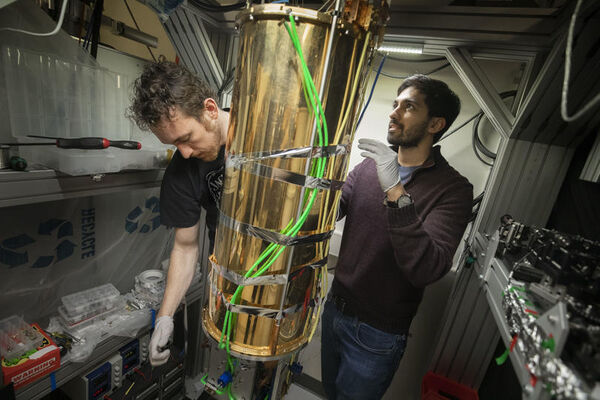
Towards an unhackable quantum internet
"A quantum internet could be used to send un-hackable messages, improve the accuracy of GPS, and enable cloud-based quantum computing. For more than twenty years, dreams of creating such a quantum network have remained out of reach in large part because of the difficulty to send quantum signals across large distances without loss. Now, Harvard and MIT researchers have found a way to correct for signal loss with a prototype quantum node that can catch, store and entangle bits of quantum information. The research is the missing link towards a practical quantum internet and a major step forward in the development of long-distance quantum networks. “This demonstration is a conceptual breakthrough that could extend the longest possible range of quantum networks and potentially enable many new applications in a manner that is impossible with any existing technologies,” said Mikhail Lukin, the George Vasmer Leverett Professor of Physics and a co-Director of Harvard Quantum Initiative. “This is the realization of a goal that has been pursued by our quantum science and engineering community for more than two decades.” The research is published in Nature." [...]
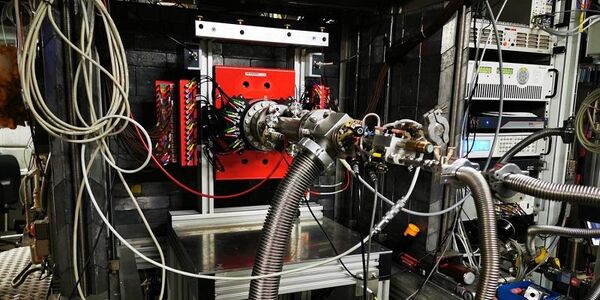
Driving forward energy-efficient electronics
"cientists have made a breakthrough in the development of a new generation of electronics that will require less power and generate less heat. It involves exploiting the complex quantum properties of electrons – in this case, the spin state of electrons. "This is an exciting breakthrough. The application of quantum physics to electronics will result in new and novel devices." Dr Matthew Rogers, University of Leeds In a world first, the researchers - led by a team of physicists from the University of Leeds - have announced in the journal Science Advances that they have created a ‘spin capacitor’ that is able to generate and hold the spin state of electrons for a number of hours. Previous attempts have only ever held the spin state for a fraction of a second." [...]
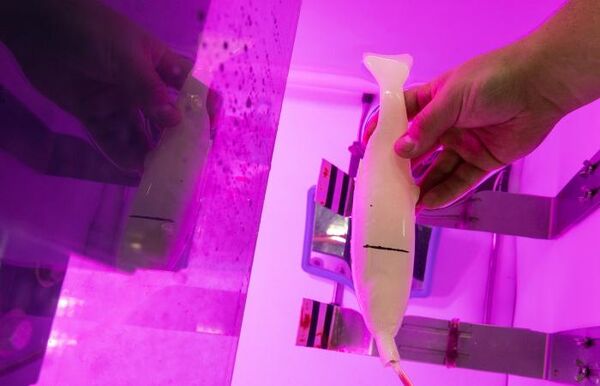
Researchers use 3D printing, sensors to create models for hydropower testing
"Hydropower developers must consider many factors when it comes time to license a new project or renew an existing one: How can environmental impacts be mitigated, including to fish populations? Researchers at the Department of Energy’s Oak Ridge National Laboratory have landed a unique solution: using 3D printing and sensors to create fake fish for turbine testing. When fish pass through hydropower dams, they encounter obstacles that can cause injuries—pressure changes, turbulence, and spinning blades on turbines. As part of its environmental assessment work for hydropower projects, ORNL developed a system to analyze the impact of turbine designs on high-value species. “We want to understand the forces different fish species encounter and how those forces may result in injury or mortality,” said Ryan Saylor, a Bredesen Center for Interdisciplinary Research and Graduate Education student working in ORNL’s Environmental Sciences Division. “There may be tweaks that turbine designers and manufacturers could make that would conserve fish species while at the same time minimizing the impact on energy production.” The work is important." [...]
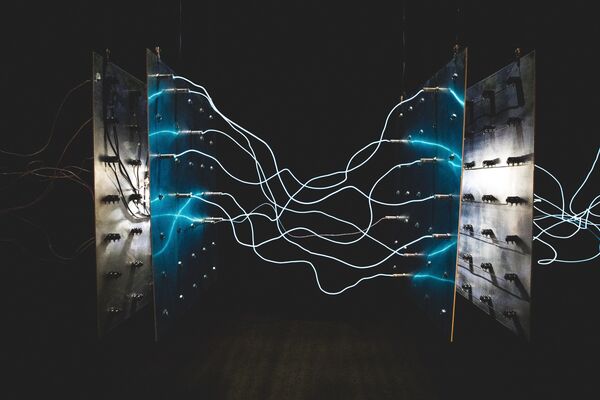
Scientists electrify aluminum to speed up important process
"Scientists have found a way in the laboratory to shorten the time it takes to create a key chemical used to synthesize a variety of medications, fertilizers and other important substances. The finding could make a number of industrial manufacturing processes cheaper and more efficient. And all it takes, essentially, is electrifying an aluminum container that includes the right chemicals. In a study recently published in the Journal of the American Chemical Society, the research team described how to shorten a process to turn one chemical – triphenylphosphine oxide – into another chemical – triphenylphosphine. Triphenylphosphine is an important chemical for the manufacturing of materials that improve farming or can be used as pharmaceuticals. “It might make it easier or cheaper to produce certain medications, materials, agrochemicals – essentially all organic synthesis,” said Christo Sevov, an assistant professor of chemistry at The Ohio State University and senior author of the study." [...]
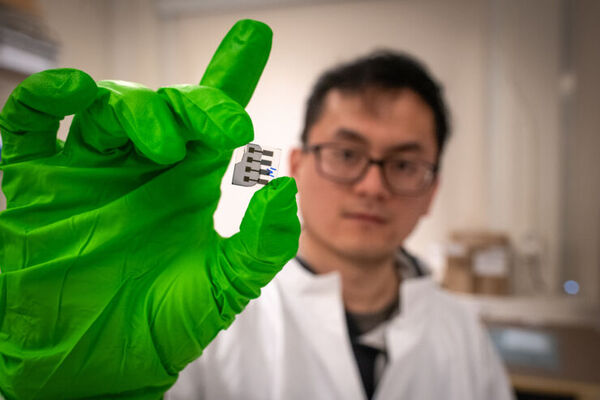
Quantum phenomenon governs organic solar cells
"Researchers at Linköping University have discovered a quantum phenomenon that influences the formation of free charges in organic solar cells. “If we can properly understand what’s going on, we can increase the efficiency”, says Olle Inganäs, professor emeritus. Doctoral student Qingzhen Bian obtained unexpected results when he set up an experiment to optimise a solar cell material consisting of two light-absorbing polymers and an acceptor material. Olle Inganäs, professor emeritus in the Division of Biomolecular and Organic Electronics asked him to repeat the experiment to eliminate the possibility of measurement errors. Time after time, and in experiments carried out both at LiU and by colleagues in Lund, the same thing happened: a tiny periodic waveform lasting a few hundred femtoseconds appeared in the signature from the optical absorption as a photocurrent formed in the solar cell material. What was going on?" [...]

It’s All about Carboneum: How Carbon-Based Materials Help Create Efficient and Safe Solar Cells
"Solar cells have already become a symbol of modern technologies and fight for the environment. At the same time, the solar power industry is always on the go: manufacturers strive to improve the efficiency of their devices, and scientists and engineers look for ways to produce solar cells that wouldn’t require highly toxic materials. One of such methods has to do with using nanostructures made of carbon, a safe, affordable and reliable material, for producing solar cells’ supplementary layers. A team of scientists that included researchers from ITMO university has recently a review on the recent advances in this field. ITMO.NEWS spoke to one of its authors, ITMO’s senior researcher Aleksandr Litvin, and learned how carbon helps make solar cells safer and more efficient. Materials race Nowadays, the development of the solar power industry resembles a race, and the competition takes place on all levels: there’s a struggle between various technologies and materials, among research teams, and among companies that produce solar cells." [...]
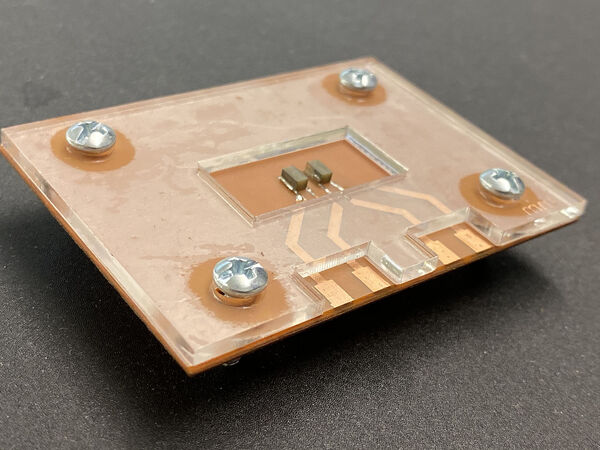
Device could ‘hear’ disease through structures housing cells
"Similarly to how a picked lock gives away that someone has broken into a building, the stiffening of a structure surrounding cells in the human body can indicate that cancer is invading other tissue. Monitoring changes to this structure, called the extracellular matrix, would give researchers another way to study the progression of disease. But detecting changes to the extracellular matrix is hard to do without damaging it. Purdue University engineers have built a device that would allow disease specialists to load an extracellular matrix sample onto a platform and detect its stiffness through sound waves. The device is described in a study published in the journal Lab on a Chip and demonstrated in a YouTube video at https://youtu.be/hPvY0Sj0vxY. “It’s the same concept as checking for damage in an airplane wing." [...]
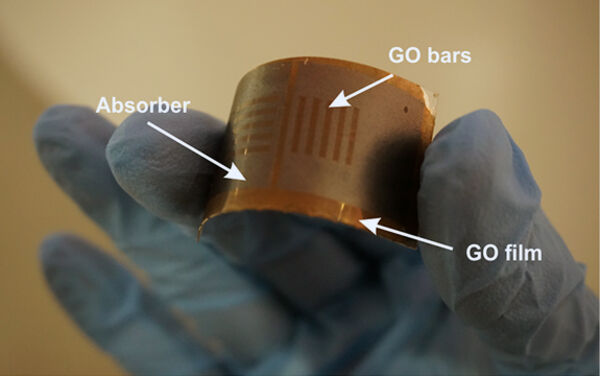
Ultrathin graphene film offers new concept for solar energy
"Researchers at Swinburne, the University of Sydney and Australian National University have collaborated to develop a solar absorbing, ultrathin film with unique properties that has great potential for use in solar thermal energy harvesting. The 90 nanometre material is 1000 times finer than a human hair and is able to rapidly heat up to 160°C under natural sunlight in an open environment. This new graphene-based material also opens new avenues in: thermophotovoltaics (the direct conversion of heat to electricity) solar seawater desalination infrared light source and heater optical components: modulators and interconnects for communication devices photodetectors colourful display It could even lead to the development of ‘invisible cloaking technology’ through developing large-scale thin films enclosing the objects to be ‘hidden’. The researchers have developed a 2.5cm x 5cm working prototype to demonstrate the photo-thermal performance of the graphene-based metamaterial absorber. They have also proposed a scalable manufacture strategy to fabricate the proposed graphene-based absorber at low cost. “This is among many graphene innovations in our group,” says Professor Baohua Jia, Research Leader, Nanophotonic Solar Technology, in Swinburne’s Centre for Micro-Photonics." [...]
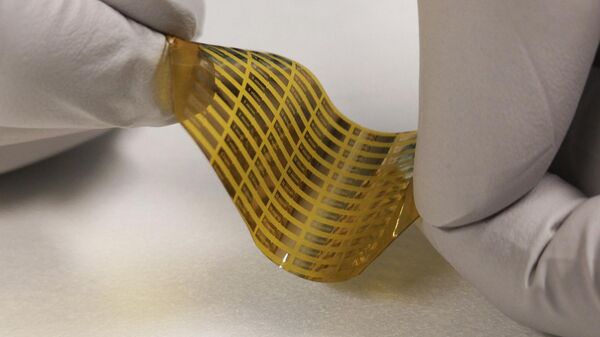
A nanoscale device that can see through walls
"Researchers at EPFL have developed a nanodevice that operates more than 10 times faster than today’s fastest transistors, and about 100 times faster than the transistors you have on your computers. This new device enables the generation of high-power terahertz waves. These waves, which are notoriously difficult to produce, are useful in a rich variety of applications ranging from imaging and sensing to high-speed wireless communications. The high-power picosecond operation of these device also hold immense promise to some advanced medical treatment techniques such as cancer therapy. The team’s pioneering compact source, described today in Nature, paves the way for untold new applications. Terahertz (THz) waves fall between microwave and infrared radiation in the electromagnetic spectrum, oscillating at frequencies of between 100 billion and 30 trillion cycles per second." [...]
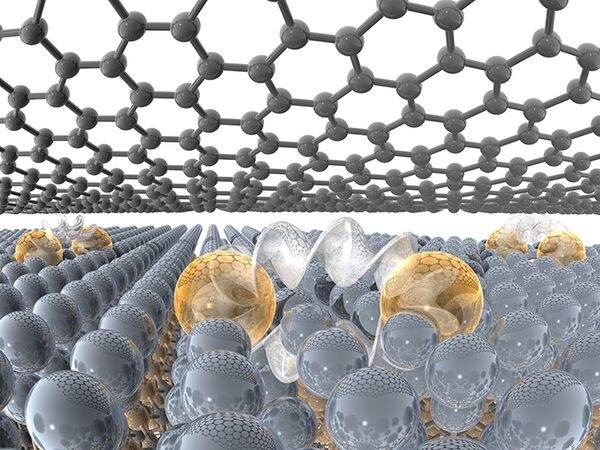
Two-dimensional metals open pathways to new science
"An atomically thin materials platform developed by Penn State researchers in conjunction with Lawrence Berkeley National Lab and Oak Ridge National Lab will open a wide range of new applications in biomolecular sensing, quantum phenomena, catalysis and nonlinear optics. “We have leveraged our understanding of a special type of graphene, dubbed epitaxial graphene, to stabilize unique forms of atomically thin metals,” said Natalie Briggs, a doctoral candidate and co-lead author on a paper in the journal Nature Materials. “Interestingly, these atomically thin metals stabilize in structures that are completely different from their bulk versions, and thus have very interesting properties compared to what is expected in bulk metals.” Traditionally, when metals are exposed to air they rapidly begin to oxidize — rust. In as short as one second, metal surfaces can form a rust layer that would destroy the metallic properties. In the case of a 2D metal, this would be the entire layer. If you were to combine a metal with other 2D materials via traditional synthesis processes, the chemical reactions during synthesis would ruin the properties of both the metal and layered material." [...]
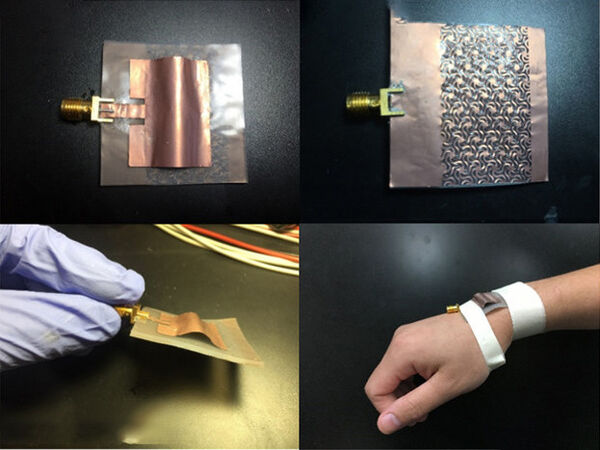
Wearable biosensors may pave the way for personalized health and wellness
"Penn State engineers say computational power is key to technology for smart bandages, health tattoos and artificial organs Bulky, buzzing and beeping hospital rooms demonstrate that monitoring a patient’s health status is an invasive and uncomfortable process, at best, and a dangerous process, at worst. Penn State researchers want to change that and make biosensors that could make health monitoring less bulky, more accurate — and much safer. The key would be making sensors that are so stretchable and flexible that they can easily integrate with the human body’s complex, changing contours, said Larry Cheng, the Dorothy Quiggle Professor in Engineering and an affiliate of the Institute for Computational and Data Sciences. His lab is making progress on designing sensors that can do just that. If biosensors that are both energy efficient and stretchable can be achieved at scale, the researchers suggest that engineers can pursue — and, in some cases, are already pursuing — a range of options for sensors that can be worn on the body, or even placed inside the body. The payoff would be smarter, more effective and more personalized medical treatment and improved health decision-making — without a lot of bulky, buzzing and beeping pieces of monitoring equipment." [...]
Documentação
A documentação é parte essencial do processo de aprendizagem e a Internet além de artigos interessantes de explorar também tem alguma documentação em formato PDF interessante de ler. Todos os links aqui apresentados são para conteúdo disponibilizado livremente pelo editor do livro.
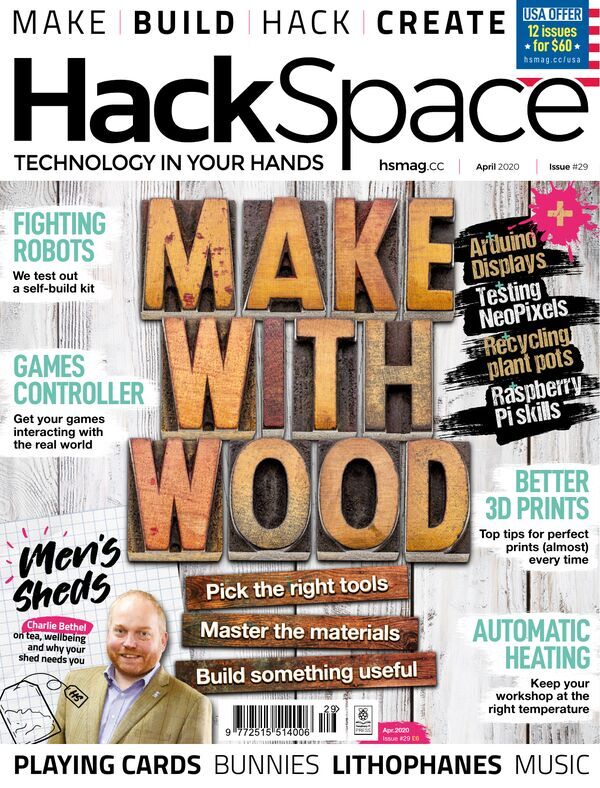
HackSpace magazine #29
"Woodworking has always seemed equal parts challenging and inviting to us. Where do you even start? You start here: we’ve taken the complex art of woodworking and distilled it to the basics. The tools, the materials you need, and a first project that will get you well on your way to building your own unique creations. Pick the right screen for your next Raspberry Pi project… Learn about how the Mens Shed’s movement is spreading wellbeing through making Build a remote control heating system for your maker space/workshop/shed Play an arcade classic using an Adafruit Circuit Playground Express" [...]
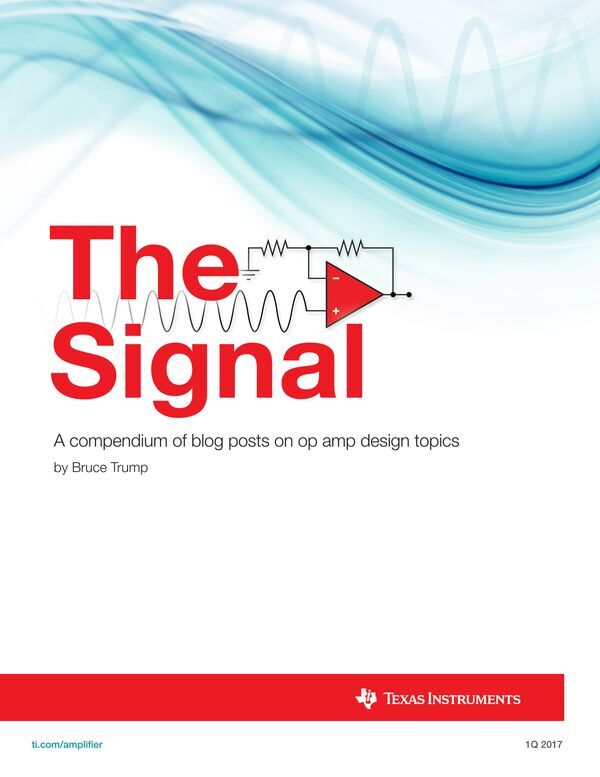
The Signal - A compendium of blog posts on op amp design topics
"Learning analog seems like a daunting task. Analog engineers do not generally acquire their experience in a linear path from start to finish: They zigzag a path through an obstacle course of hurdles. They acquire insights in small pieces – a bit here and a bite (not a byte) there. Slowly, puzzle pieces fit into place, and hazy concepts come into focus. We will never have the satisfaction of jumping a final hurdle or tapping the final puzzle piece into place; that just won’t happen. Colleagues much smarter than I am cannot answer all of my questions … and I cannot answer all of yours." [...]
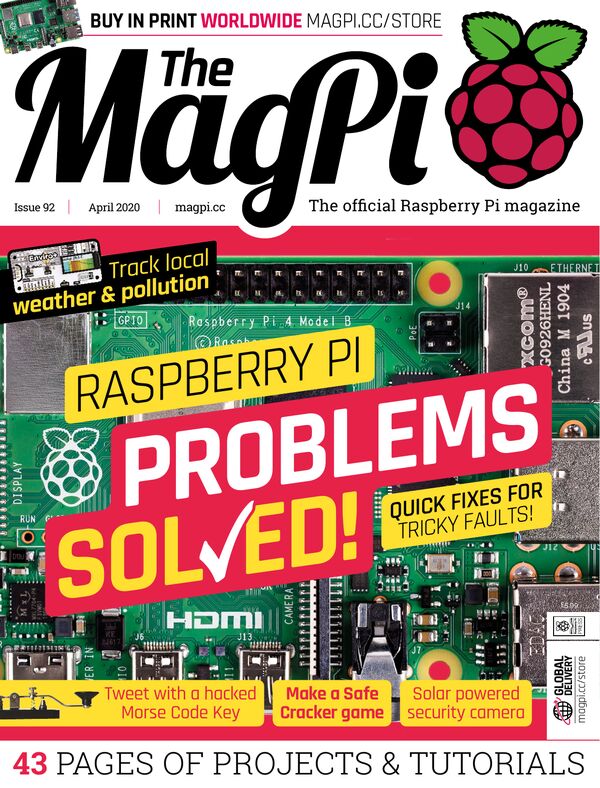
The MagPI 92
"Your Raspberry Pi problems solved in the latest edition of The MagPi. Plus! Track local weather and pollution, add facial recognition to a magic mirror, and tweet with a hacked Morse code key. Inside The MagPi magazine #92 Solve Raspberry Pi problems. Learn to diagnose and fix issues with Raspberry Pi. Get rid of glitches and odd behaviour, sort out boot problems, reconnect networking problems, and discover advanced troubleshooting tips." [...]
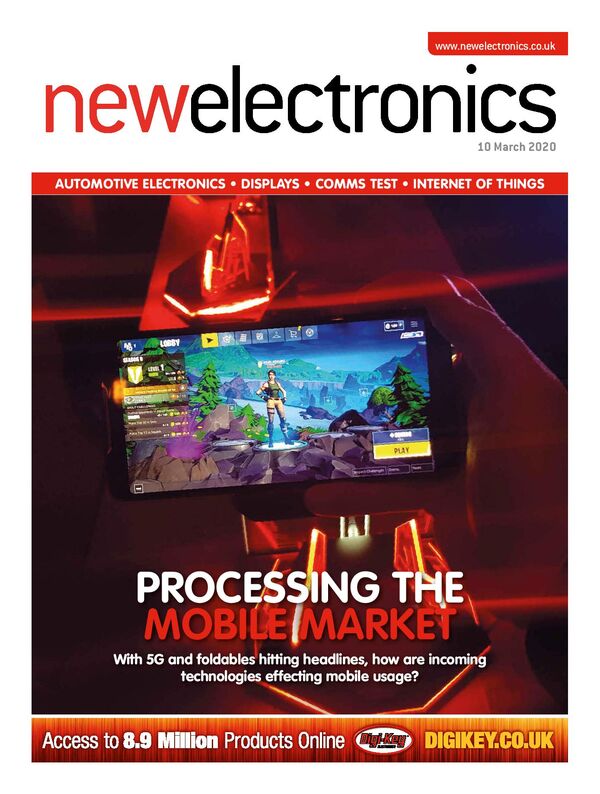
newelectronics 10 Março 2020
"New Electronics is a fortnightly magazine focusing on technological innovation, news and the latest developments in the electronics sector. Downloadable as a digital page turner or pdf file, or offered as a hard copy, the New Electronics magazine is available in a format to suit you. " [...]
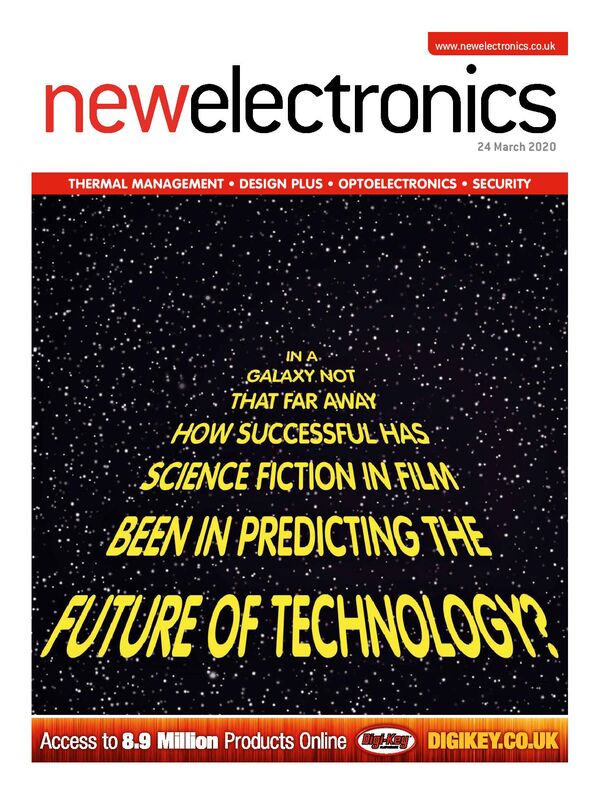
newelectronics 24 Março 2020
"New Electronics is a fortnightly magazine focusing on technological innovation, news and the latest developments in the electronics sector. Downloadable as a digital page turner or pdf file, or offered as a hard copy, the New Electronics magazine is available in a format to suit you. " [...]
Projetos Maker
Diversos Projetos interessantes.
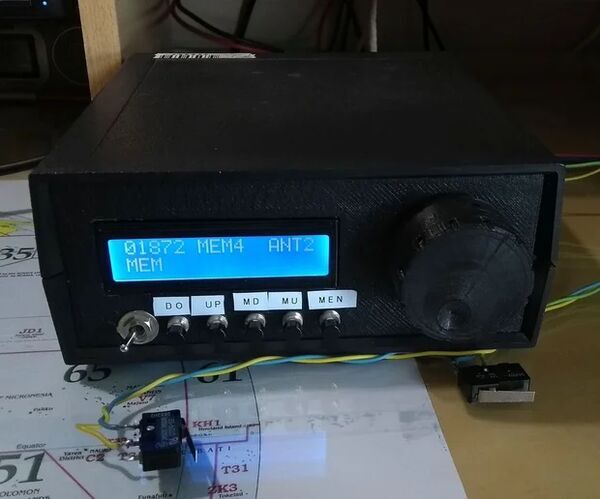
Controller for 3 Magnetic Loop Antennas With Endstop Switch
"This project is for those ham amateurs who don't have a commercial one . It's easy to build with a soldering iron, a plastic case and a little knowledge of arduino.The controller is made with budget components you can find easily in Internet (~20). The main component is a cnc shield that fits over an Arduino Uno. Both made a compact, small and cheap controller. This controller can work without endstop switches because you can manually control the 0 position and the upper limit. Features: - New revision of the software ver 1.0 04/03/2020 fixed some bug." [...]
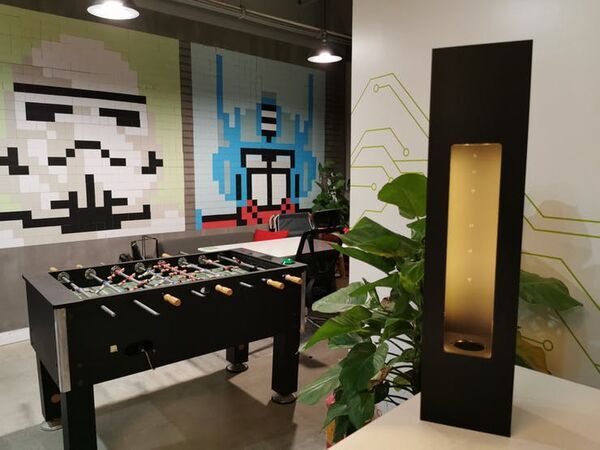
Back to the Future Antigravity Water Drop - Seeeduino Lotus
"Is there an instant in which you want time to go backwards? Look closely at the water droplet. Is it dripping down or going up? Time is like a torrent, pushing people forward. Is there an instant in which you want time to stand still or go backwards? Look closely at the water droplet." [...]
How I Made My Own DIY “Pixelstick” for $22
"You might know the Pixelstick. “nothing compares” is one of their statements. And this is true. At least price-wise. The Original Pixelstick retails for EURO 399,– here in Germany. I have always wanted one to at least try out some lightpainting with it." [...]
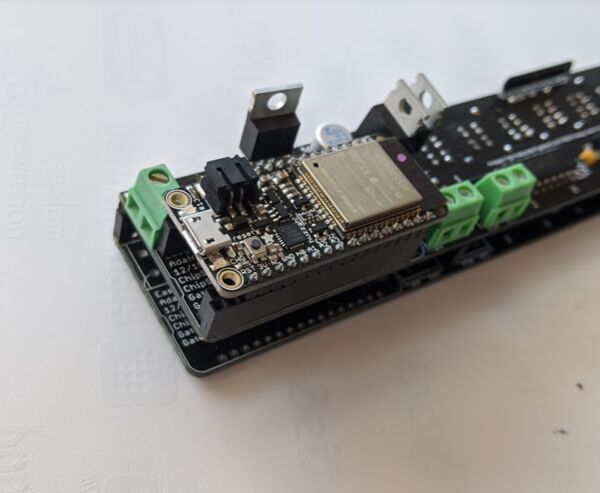
2019 Easy Bee Counter V.1
"This version of the bee counter is easy to solder and assemble (all through-hole). It's been tested and works* with sample code provided. The current tested design is easy to program and approachable to beginner programmers. The printed circuit board accepts multiple Arduino platforms made by Adafruit including their line of Adafruit Feather type micro-controllers and Adafruit ItsyBitsy micro-controllers. The Adafruit feathers include wifi and long range radio features (esp8266, esp32, and LoRA). All the ItsyBitsy 3V models (M0, M4, and 32u4) should work fine." [...]
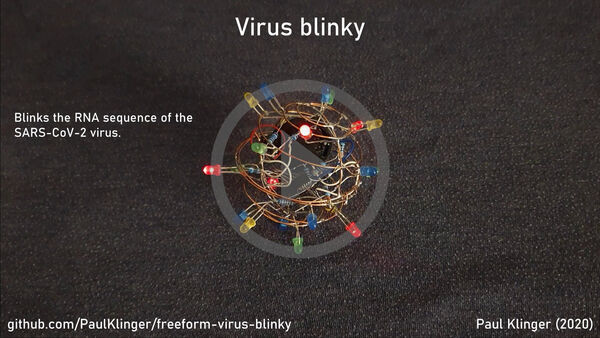
Virus Blinky
"Freeform electronics thingy vaguely shaped like a SARS-CoV-2 virus blinking out the virus's RNA sequence. The main body consists of 0.6mm copper wire shaped into circles and soldered together. There's a makeshift hinge on one side so the ball can be opened to change the battery and reprogram the MCU. See the schematic for the rest of the electronics. The power switch connects the positive terminal of the battery holder to the outer sphere, the anodes of all the LEDs are soldered on there. The cathode is connected via a resistor per colour and side to the microcontroller." [...]
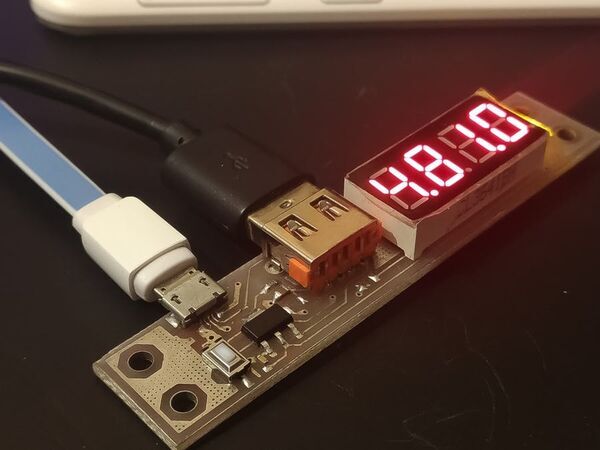
Self-Calibrating USB Voltage/Current Meter
"With a code size of 1KB on an ATtiny13A MCU, this tiny module measures voltages up to 22 volts and current up to 5 amps. There are a lot of so-called "USB doctor" modules which are used for monitoring currents flowing through a USB connection. They are used for cable or charger testing, quick charge detection and load current consumption measurements. They're cheap of course and someone may ask why should we build one? If you can do it better, then do it. So what's better about my design?" [...]

The Amethyst Colour Video System
"The Amethyst is a retro-styled "home computer" built around an Atmel ATmega1284 microcontroller. It features composite (NTSC) video output with both high-color and high-resolution modes, mono audio output, and a full-travel mechanical keyboard. It includes a full-featured implementation of the powerful Forth programming language, with graphics and sound commands, debugger, and screen editor. A single USB Type-B cable provides 5V power as well as serial communication with a PC. Amethyst is compatible with the Optiboot (Arduino) bootloader, and new firmware may be uploaded to it without a specialized programming device. Full specifications ATmega1284 microcontroller (8-bit) running at 14.318 MHz 16KB internal memory (16352 bytes available for applications) 4KB nonvolatile EEPROM memory Mechanical keyboard with Cherry MX keyswitches NTSC color and monochrome composite video output: 256-color, 16-color, and 4-color bitmap graphics at resolutions up to 160x200 pixels Monochrome bitmap graphics at resolutions up to 640x200 pixels 40x25 and 80x25 monochrome text modes 40x25 color text mode 40x25 color tiled graphics modes Single-channel audio output (pulse wave or PWM) USB serial communication at speeds up to 57600 baud Four SPI expansion ports for peripherals, controllers, and storage devices Only 6 chips (ATmega1284, FT320X, 2x 74HC157, 2x 74HC166)" [...]
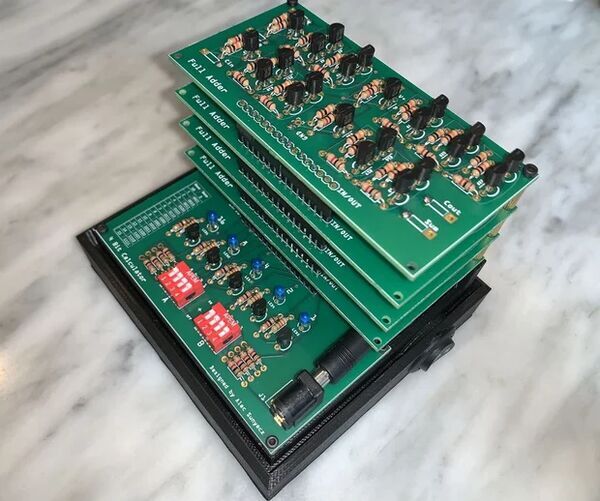
4-bit Binary Calculator
"I developed an interest in the way computers work on a fundamental level. I wanted to understand the use of discrete components and the circuits necessary to accomplish more complex tasks. One important fundamental component in a CPU is the arithmetic logic unit or the ALU which performs operations on integer numbers. To accomplish this task, computers utilize binary numbers and logic gates. One of the simplest operations performed is adding two numbers together, in an adder circuit. This video by numberphile does an excellent job of explaining this concept via Domino Addition." [...]
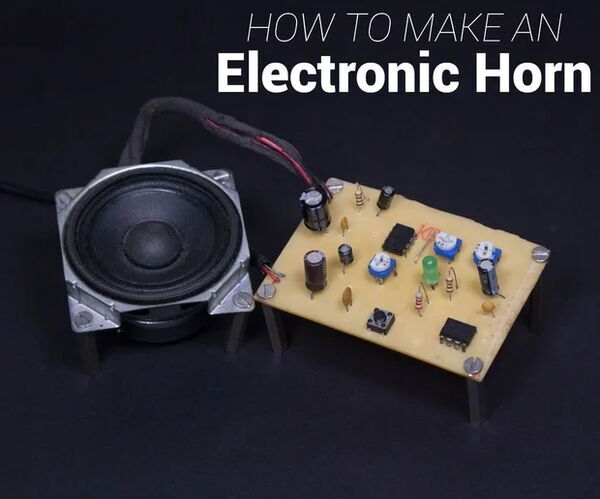
Electronic Loud Horn Using 555 Timer
"The LM555 generates an electronic horn signal which is amplified by an LM386. The tone and volume of the horn can be easily varied. The horn can be used in a car, scooter, cycle, and motorbike. Electronic Components: 1x IC 555 1x IC LM386 2x IC Holder 1x 10 Resistor 1x 1K Resistor 1x 2K Resistor 3x 10K Potentiometer 1x Tactile Momentary Push Buttons 1x 5mm LED 1x 0.1uF Capacitor 1x 10uF Capacitor 1x 100uF Capacitor 1x 220uF Capacitor 1x 10nF Capacitor 1x 47nF Capacitor 1x 100nF Capacitor 1x Speaker 1x 9V Battery Holder 1x 9V Battery 1x PCB" [...]
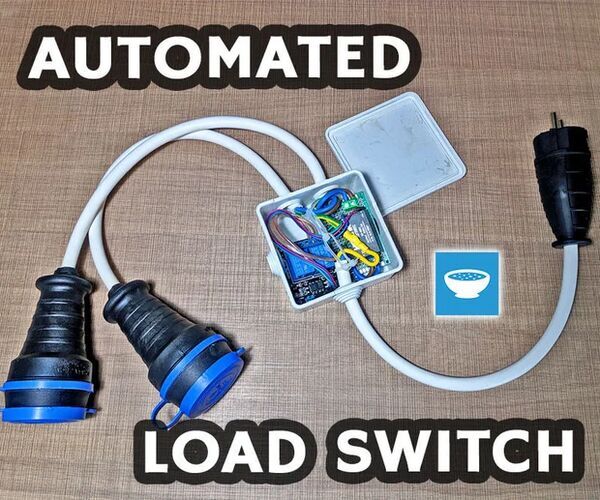
Automatic Load (Vacuum) Switch With ACS712 and Arduino
"Hi Everyone, Running a power tool in a closed space is a hustle, because of all of the dust created in the air and dust in the air, means dust in your lungs. Running your shop vac can eliminate some of that risk but turning it on and off every time you use a tool is a pain. To alleviate this pain, Ive built this automatic switch that houses an Arduino with a current sensor to sense when a power tool is running and turn on the vacuum cleaner automatically. Five seconds after the tool stops, the vacuum stops as well. Supplies: For making of this switch I used the following components and materials: Arduino Uno ACS712 current sensor Attiny85 IC Socket Solid State Relay 5V Mechanical Relay HLK-PM01 5V power supply Prototype PCB Wire Dupont cables Plastic enclosure Soldering iron Solder Wire snips" [...]
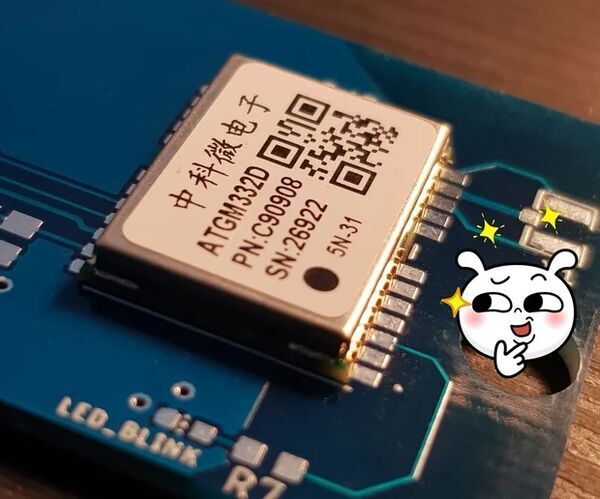
GPS Monitoring With OLED Display Project
"Hello everyone, in this quick article I will share with you my project :ATGM332D GPS module with SAMD21J18 Microcontroller and SSD1306 OLED 128*64 display, I built a special PCB for it on Eagle Autodesk, and program it using Atmel studio 7.0 and ASF4 so in this article I will share with you this journey and the files I used if you are interesting to do it by yourself. Now if you are programming your MCU/development board using Arduino , this project should be relatively easy to you , but here I will use ASF4(Advanced software framwork 4) from Atmel/Microchip which is based on C language and would give you an idea for how to read the GPS NMEA message using USART Asynchronous driver (Callback) and provide you with a simple library that you can use it with any Micro-controller and different platform by simply add the appropriate Driver you are using to receive the message from the GPS(NMEA message). " [...]
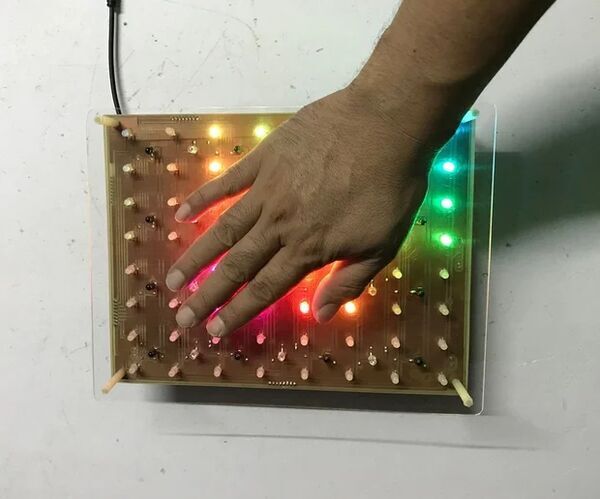
PCB FOR INTERACTIVE MODULE 8x8
"I have previously done a project about "INTERACTIVE RGB LED TABLE" with A2 size, 16x16 RGB LED matrix on foam sheets. I gifted it to my friend. Today, I will share how to implement this project by designing an INTERACTIVE MODULE 8x8 on printed circuit board. By doing this way, we can combine some INTERACTIVE MODULE 8x8 together to get a big interactive led table. We can also save a lot of time and the circuit works more stable, minimizing noises compared to soldering copper wires to each component. The main components used to make an INTERACTIVE MODULE 8x8 as follows 01pcs x Arduino NANO 01pcs x Double Side Tinned Prototype PCB Universal Board 9x15cm 01pcs x Copper Clad Double Side Plate 20x30cm 1.5mm 64pcs x RGB LED 5mm, Common Anode 12pcs x IR LED 16pcs x Photo-Transistor 01pcs x 74HC138 08pcs x Transistor A1013 03pcs x 74HC595 03pcs x ULN2803 02pcs x 74HC4051 12pcs x R100/150 08pcs x R560 16pcs x R10K 08pcs x Capacitor 1uF 06pcs x 8P Female 2.5mm Pitch Flat Ribbon Cable 01pcs x 6P Female 2.5mm Pitch Flat Ribbon Cable 02pcs x 4P Female 2.5mm Pitch Flat Ribbon Cable 02pcs x 2Pin 5.08mm Pitch Screw Terminal Block 01meter x 8P Rainbow Ribbon Cable 01pcs x White Acrylic Plate A4 size." [...]
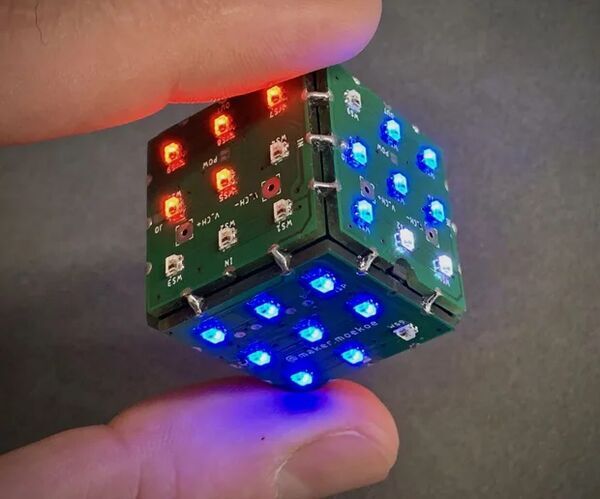
Six Sided PCB LED Dice With WIFI & Gyroscope - PIKOCUBE
"Hello makers, it's maker moekoe! Today I wanna show you how to build a real LED dice based on six PCBs and 54 LEDs in total. Next to its inner gyroscopic sensor which can detect movement and dice position, the cube comes with an ESP8285-01F which is the smallest WiFi MCU I know so far. The MCU dimensions are just 10 by 12 millimeters. Every single PCB has dimensions of 25 by 25 millimeters and contains nine WS2812-2020 mini LED pixel. Next to the controller there is a 150mAh Lipo battery and a charging circuit inside the dice." [...]
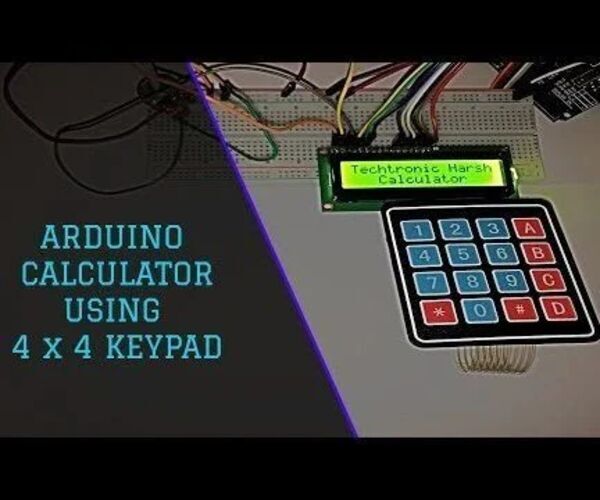
Arduino Calculator Using 4X4 Keypad
"In this tutorial we will build our own calculator with Arduino. The values can be sent in through a keypad (44 keypad) and result can be viewed on a LCD screen. This calculator could perform simple operations like Addition, Subtraction, Multiplication and Division with whole numbers. But once you understand the concept you can implement even scientific functions with Arduinos built in functions. Supplies: Arduino Uno 162 LCD Display 44 Keypad Breadboard Jumper Cables Arduino Cable" [...]
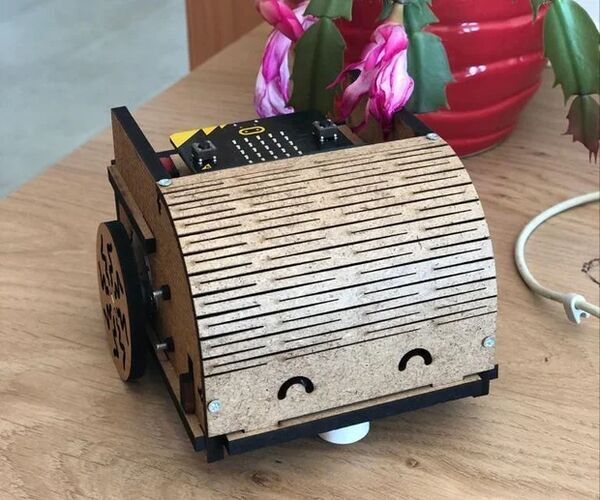
DIY Educational Micro:bit Robot
"This instructable will show you how to build a relatively accessible, capable and cheap robot. My goal in designing this robot was to propose something which most people could afford, for them to teach computer science in an engaging way or to learn about it. Once you get this robot built you can enjoy its variety of sensors and actuators to do basic but also quite advanced things depending on the version you build (I'll provide two versions). With this robot you are giving eyes (180 view !) and legs (with precise movement possible!) to the micro:bit while the micro:bit provides you great features such as the LED matrix, the radio communication, bluetooth communication, accelerometer, compas, but also access to all that stuff with either MicroPython or with a visual programming language similar to scratch (actually also in C++ and javascript but I find those less suitable for education)." [...]
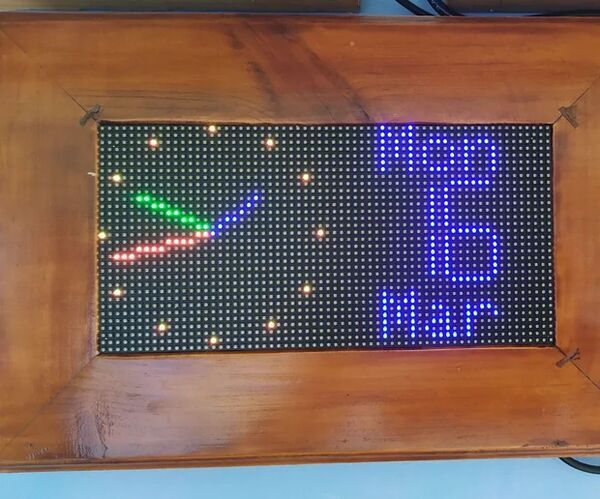
WiFi Clock,Timer & Weather Station, Blynk Controlled
"This is a Morphing digital clock (thanks to Hari Wiguna for the concept and morphing code), it is also a Analog clock, weather reporting station and kitchen timer. It is controlled entirely by a Blynk app on your smartphone by WiFi. The app allows you to: Display morphing digital clock, day, date, monthDisplay Analog clock, day, date, month Display upward scrolling weather from OpenWeathermap.org and local temp/humidity sensor. Use a kitchen timer function NTP server time update with time zone selecter OTA (over the air) update of firmware The system firmware described here uses a local server for Blynk utilising a Raspberry Pi, There is plenty of info about how to set this up on the Blynk website. Downloading of the Local Server software is free and can otentially save you money if you have many Blynk controlled gadgets around your home. Alternatively you can create an account with Blynk and use thier servers although this will probably cost you a few dollars for the app widgets." [...]
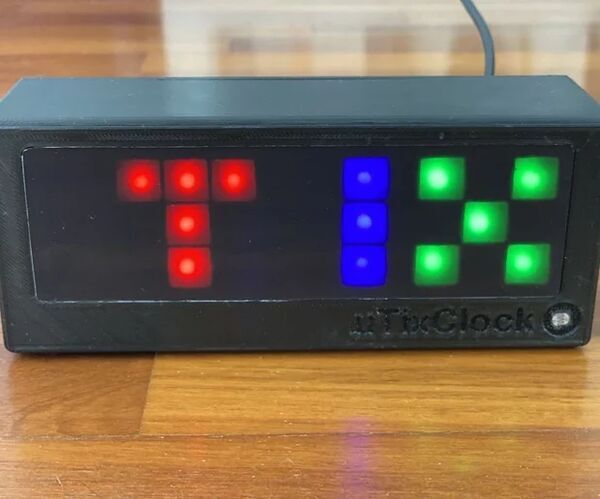
UTixClock
"First time I saw this clock in a video from one of my favourite YouTube channels named SmarterEveryDay. I instantly liked the idea and wished to buy one. Then I searched in Google and found this website which sells the Tix Clock. I was about to place an order, but then I thought - won't it be fun in making one rather than buying it! So I started my research and ended up finding this article on Instructable. Then I realized that the author of the post is the same guy who sells the clock commercially." [...]
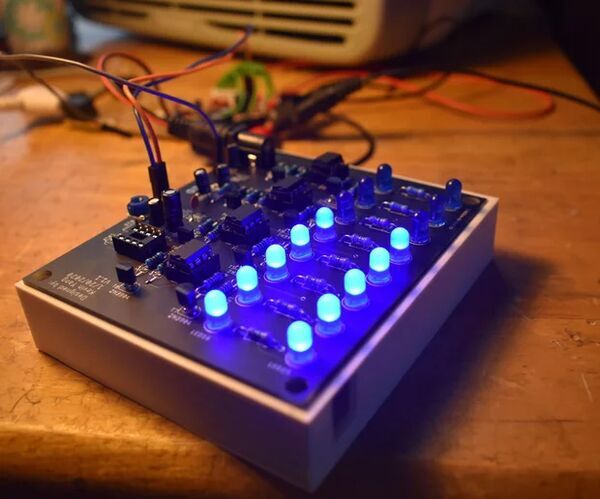
LED Volume Bar
"My workshop is too bland. Despite the varnished, 80s-Esque wood planks that cover my walls, it lacks both color and of course: LEDs. Likewise, I often play music while soldering electronics. This got me thinking, could I combine both music and LEDs to make my room lessboring? The answer: an LED Volume Bar. " [...]
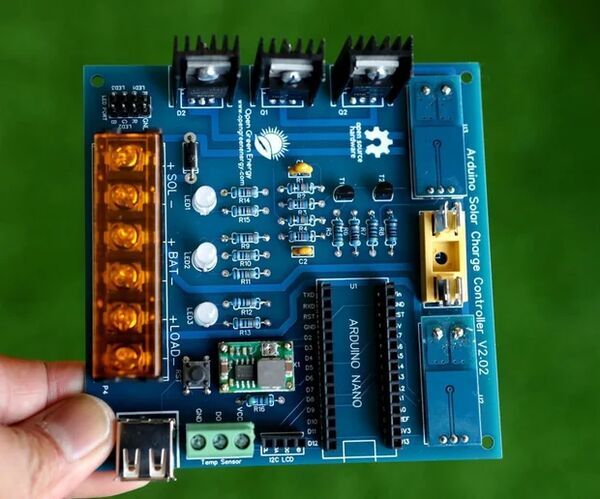
Arduino Pwm Solar Charge Controller ( V 2.02)
"If you are planning to install an off-grid solar system with a battery bank, youll need a Solar Charge Controller. It is a device that is placed between the Solar Panel and the Battery Bank to control the amount of electric energy produced by Solar panels going into the batteries. The main function is to make sure that the battery is properly charged and protected from overcharging. As the input voltage from the solar panel rises, the charge controller regulates the charge to the batteries preventing any overcharging and disconnect the load when the battery is discharged. You can go through my Solar projects on my website: www.opengreenenergy.com and YouTube Channel: Open Green Energy I am making a YouTube video for this project. Keep in touch for further updates." [...]
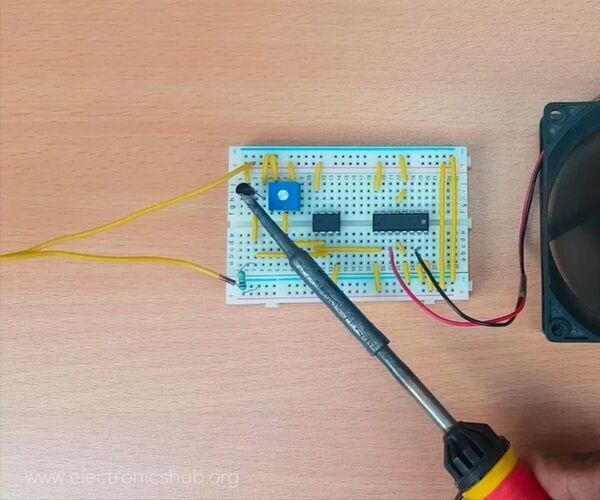
Temperature Controlled System With L293D
"The temperature sensitive controlled system is a device which controls and maintain the temperature of an object over a particular area related to the surroundings. These types of controlled systems are mainly used in ACs (Air Conditioners), Refrigerators, coolants, thermal automobile industries etc. so lets understand the working and principle of the temperature controlled system with our project demonstration. Principle: The temperature controlled system works, when the temperature is more than the surrounding the Op-Amp output flows across the circuit is high, which is passed to the motor fan for the cooling of an system and acts as a coolant component. Since we have connected the driver motor to the ground the output of L293D is high and the fans motor starts rotating resulting to the temperature decrease of the system. This types of temperature controlled systems are mainly used and implemented in automobile industry, water heaters, refrigerators, coolants etc." [...]

Mechanical Arduino Clock
"This project is a mechanical clock using an Arduino uno, and servos to move hands around the dial. This project builds a mechanical clock that uses an Arduino and servos to move hands around a dial to show the time. " [...]
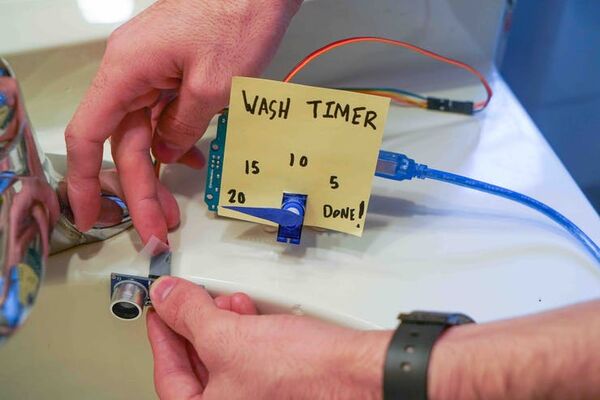
Wash-A-Lot-Bot! A DIY Hand Washing Timer
"An easy way to make a hand-washing timer, using Arduino. Using proper hand-washing technique is one of the five things you can do right now to help keep yourself and others healthy. The CDC recommends washing for 20 seconds, so while stuck at home, we made this DIY hand washing timer to help nudge everyone in the right direction. We call it - the Wash-A-Lot-Bot! This project is for people of all ages and skill-levels, and all the parts can be ordered from Adafruit, Sparkfun, or any electronics retailer for roughly $35. We’re sharing our project to hopefully inspire other makers out there to come up with their own creative ideas to help fight the spread of COVID-19 in whatever ways they can." [...]
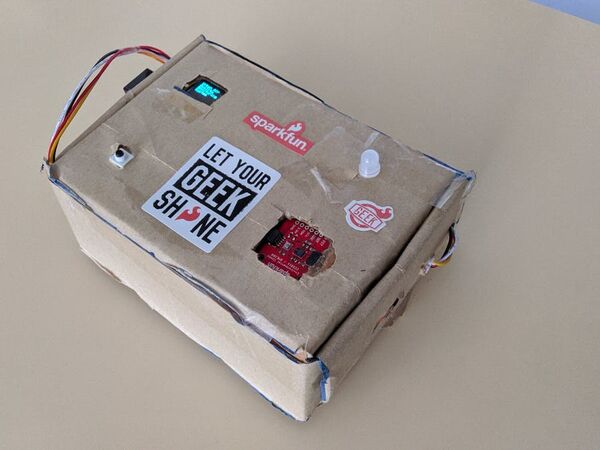
SparkUQM - An AI Powered Urban Quality Monitoring System
"A SparkFun Artemis powered urban quality monitoring system with IoT capability and TensorFlow Lite based machine learning implementation. The metro cities all around the world are facing a lot of problem because of the increasing population, which is resulting in an exponential pollution rise, which is a very serious problem and needs immediate attention. But the problem is that there is no proper monitoring device for these Urban environments, so we are unable to get any reliable data. Even if there are devices to monitor the conditions, they are in limited number due to the current cost - to - reliability and accuracy count. So, What's the Solution? The SparkUQM - designed specifically for urban environments." [...]
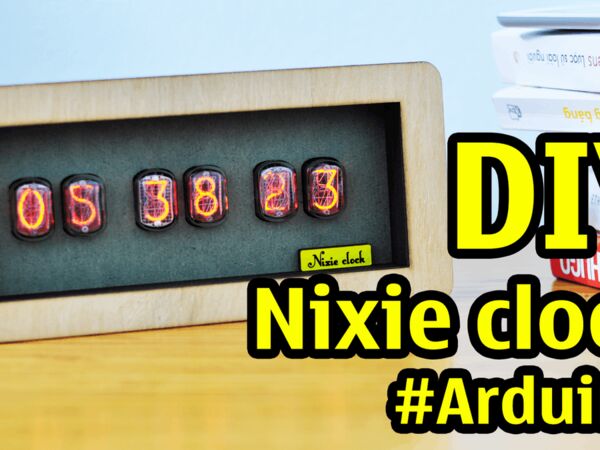
Make Nixie Clock With Arduino in MDF Wood Case
"In this instruction, I will show how to make Nixie clock with Arduino by circuit which is as much simply as possible" [...]
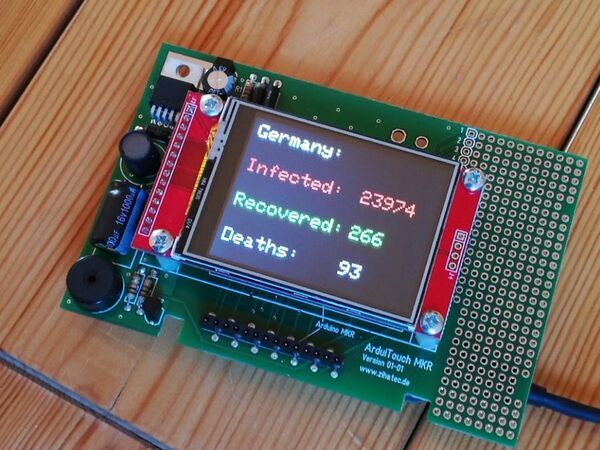
COVID19 Realtime Monitor
"This small project shows the current data of coronavirus outbreak of different countries in realtime on a 2.4 inch TFT. This little tracker will help you to be up to date about the coronvavirus outbreak and the situation in your country. The display shows alternating the current data of different countries of your choice. The data is collected by the website www.worldometers.info/coronavirus/" [...]
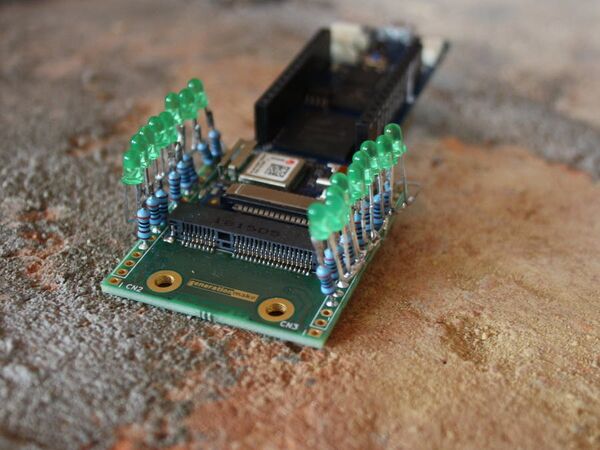
LED Sequencer with the MKR Vidor 4000
"My LED sequencer itself is quite simple but I shows you how to use the Mini PCIe connector of the MKR Vidor 4000 with a breakout board. The Arduino MKR boards only have a limited number of GPIOs. The MKR Vidor 4000 is different because it has a FPGA to support its main microcontroller. Many of the FPGA pins are available on the Mini PCIe connector. So I took a closer look at this connector and wanted to see which functions are available at these pins. " [...]
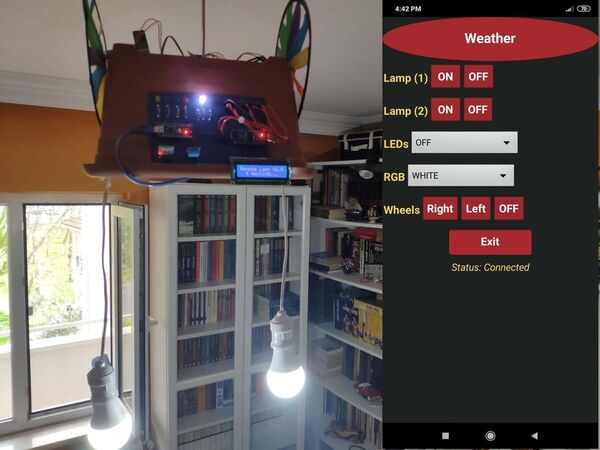
Bluetooth Mobile Remote Lamp with Weather Station
"Control your room lighting system and display weather information via specifically developed Android app and a uniquely designed PCB. I have created an electronics project named Remote Lamp two years ago, as my new room lighting system with adjustable RGB, LEDs, and some joyful features controlled by a TV remote control. However, I decided to improve the mentioned project since it has irritating redundant wiring due to the LCD screen connections and deficiencies in the user interface due to the TV remote control. So, I took my nascent idea of remote control of my room lighting system and turned it into a mobile remote lighting system controlled by an Android application developed by me. And, to get rid of the redundant wiring and add more features with limited pins on Arduino Nano, I designed a PCB (Printed Circuit Board) named Mobile Remote Lamp with Weather Station V2.0, which includes all built-in component connections. " [...]
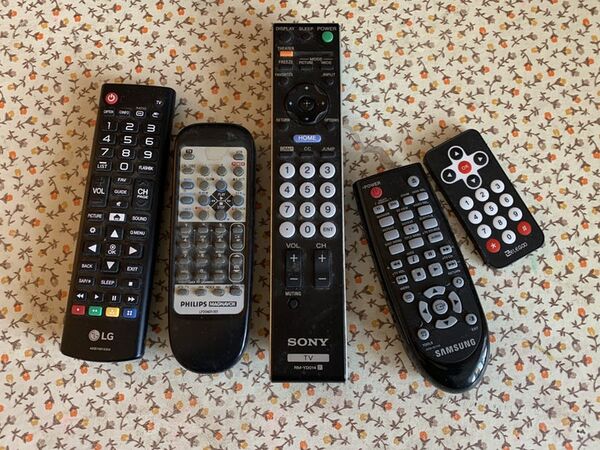
Repurpose Old Remote Controls
"Don't throw away those old TV, DVD, etc., remotes because they can control your house's electrical devices! This project allows you to reuse surplus remote controls from old VCRs, TV, DVD players, etc. You can use the remotes to turn on devices like lamps, heaters, etc. with relays, power transistors or anything else a 5-volt signal can control. As shown here, it just toggles up to 6 LEDs. The idea is to provide the sketch and breadboard layout so that the signals sent to the LEDs can be sent in parallel to whatever the user imagines!" [...]
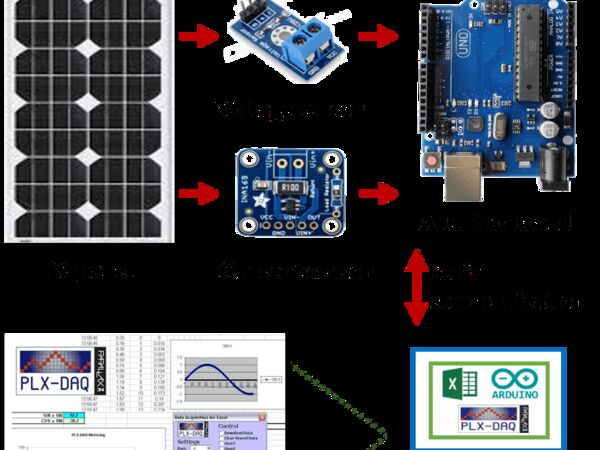
Real-time data acquisition of solar panel using Arduino
"Use of a simple instrumentation method (based on Arduino and Excel) to acquire, monitor and store PV system data in real-time. This project proposes a Low-cost way of virtual instrumentation for real-time monitoring of the PV panel characteristics such as voltage, current and power. The system design is based on a low-cost Arduino acquisition board. The acquisition is made through a low-cost current and voltage sensors, and data are presented in Excel by using the PLX-DAQ data acquisition Macro. The structure of the equipment used is shown in the Figure below. The PV current and voltage are obtained through the current and voltage sensors." [...]
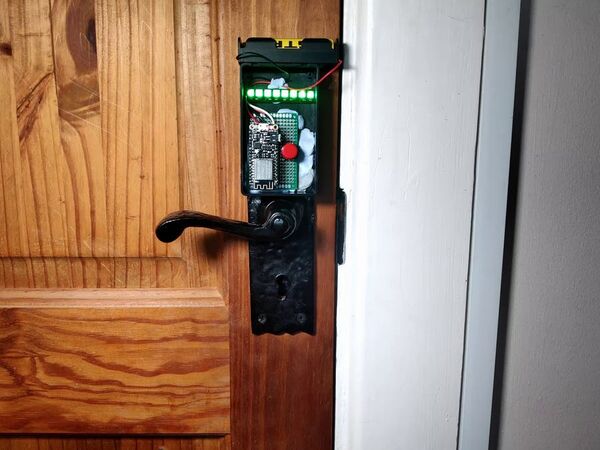
WiFi Work From Home Indicator
"For those of use fortunate enough to be able to work from home, this device will hopefully help! For those of us fortunate enough to be able to work from home, we are probably finding that there are some major challenges when it comes to boundaries with others in the house. To help with this, I created this really simple build that allows you to control the colour of LEDs using a web interface to let others in the house know that you are on a call or otherwise not to be disturbed. The light also contains a magnet so it can easily be attached and removed from the door handle for ease of use and charging. So if you area looking for a little more peace at home, maybe this is a guide for you! " [...]
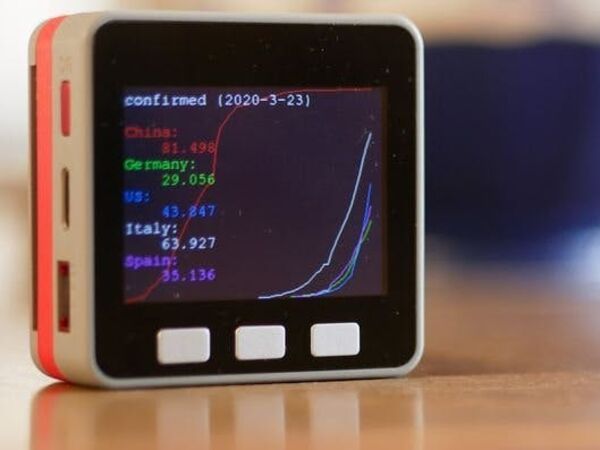
Covid-19 Data Monitor
"Using the M5Stack to visualize timeseries data of the Covid-19 pandemic. Timeseries data of confirmed infections and deaths during the Covid-19 pandemic strongly illustrate the seriousness of the situation. Many websites or smartphone apps are available to view and compare this data. Interfaces and APIs to current data sets are also available, which makes it possible to evaluate and display the data by yourself. I was interested in comparing the data of certain countries directly in one graph. So I wrote a software to load and display the data of 5 countries as combined graphs on a M5Stack." [...]
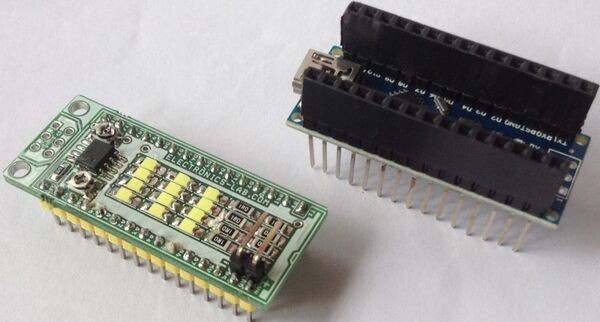
750mA Constant Current LED Driver Arduino Nano Shield
"This small constant current LED driver Nano shield has been designed using CAT4104 IC from ON semiconductor. Its 4 channel LED driver. The board has provision to mount 20 SMD 1206 LEDs. The LED can be RED, GREEN, BLUE and WHITE. Reduce the number of LED to 12 if White LEDs are used, as white LEDs are 3-5V and total series voltage should not exceed 12V. CAT4104 provides four matched low dropout current sinks to drive high−brightness LED strings up to 175 mA per channel." [...]
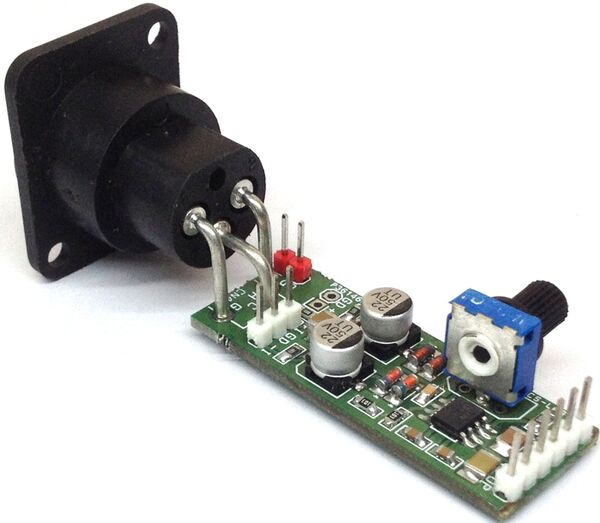
Phantom Powered Micro-Phone Pre-Amplifier using SSM2019
"The project published here is based on SSM2019 IC which is a latest-generation Pro audio preamplifier. A female XLR connector is provided to connect differential Micro-phone. Circuit also provides Phantom power input, combining SSM preamplifier design expertise with advanced processing. The result is excellent audio performance, the attached trimmer potentiometer helps to adjust the output gain. The SSM2019 is further enhanced by its unity-gain stability. Key specifications include ultra-low noise (1.5 dB noise figure) and THD (<0.01% at G = 100), complemented by wide bandwidth and high slew rate." [...]
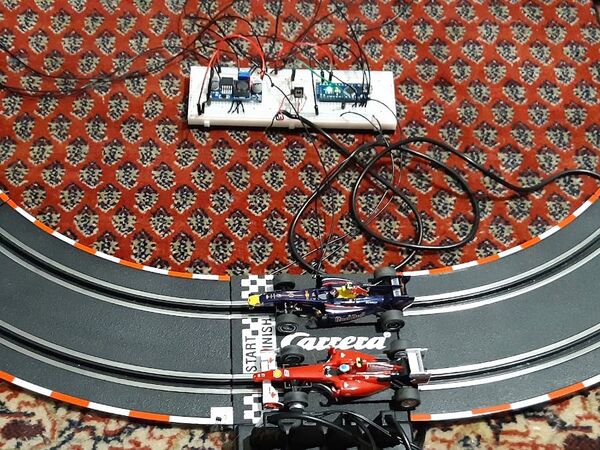
Automate Slot Cars with an Arduino
"You want to race with your Carrera slot cars, but have nobody who wants to play with you? So why don´t you race against an Arduino? The challenge of slot car racing is to accelerate and brake the car just in the right moment. When we want to automate this by a microcontroller, we must know where the car actually is. Magnets which are fixed to the car´s wheels and hall effect switches around the track are therefore a perfect way to identify the position of the car: Whenever the car passes by a hall effect sensor, it sends an impulse to the Arduino. " [...]
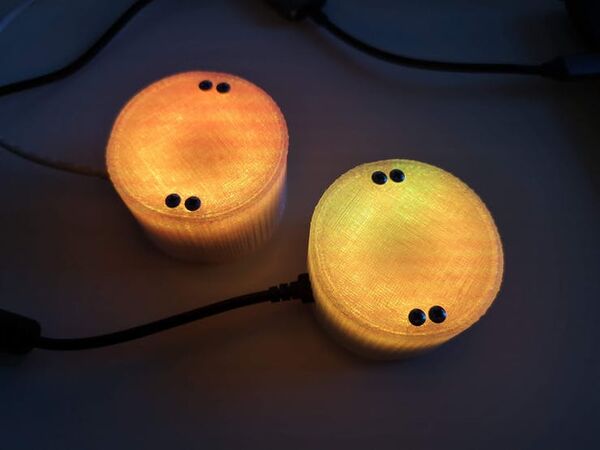
Corona Lamp: Monitor the Pandemic
"Paranoid, or “just concerned”, with the ongoing pandemic and want to keep tabs on the situation? Corona Lamp has got you covered! Paranoid, or “just concerned”, with the ongoing pandemic and want to keep tabs on the situation?This ESP8266 and WS2812B enabled lamp has got you covered. Are you freaking out, all stocked up on toilet paper and waiting the virus out? You can check the Corona Lamp on how the apocalypse is doing. If it’s all green, it’s safe to go out." [...]
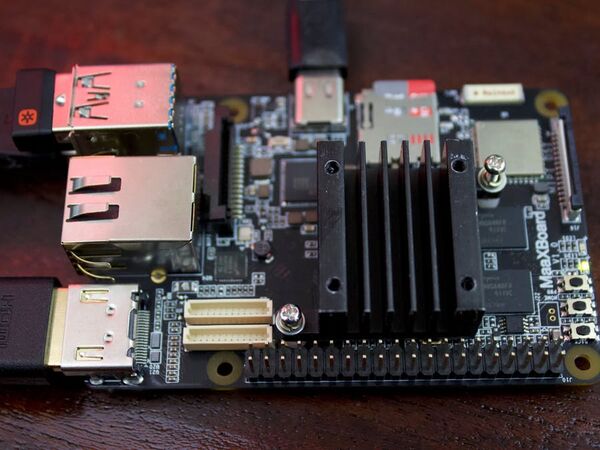
Getting Started with MaaXBoard
"Avnet's MaaXBoard, which is based on NXP i.MX 8M, is kind of like Raspberry Pi, but with hi-def video and audio processing MaaXBoard is designed using the NXP i.MX 8M processor based on Arm® Cortex®-A53 and Cortex-M4 cores. It provides 20-channel hi-fidelity audio and 4K video processing for applications that scale from consumer home audio to industrial building automation and mobile computers. To make setup easy, I'll be using a keyboard, mouse, and external monitor. You can also connect to the board via TTL and use an SSH client like PuTTY to do the same setup via terminal (steps are outlined here). You can also connect to a MIPI display. Embest sells the recommended display here." [...]
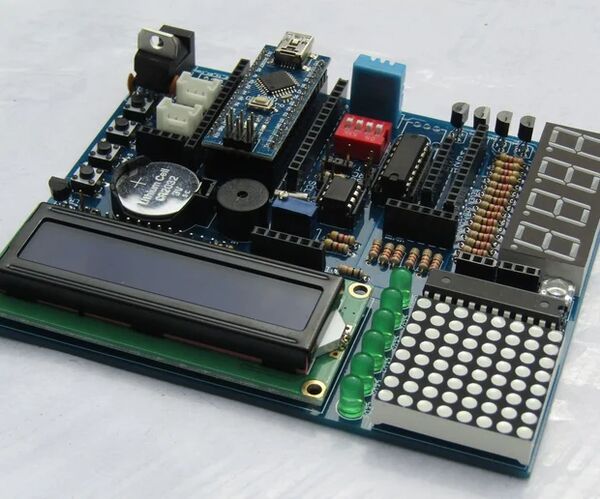
Open Source Arduino Learner Kit V2
"Last year, I made my first Arduino Learner Kit for making the Arduino learning easy to a beginner. Over the year I discovered few bugs on my design. I also got some feedback from the readers to make a few modifications. Considering all I made the second version of the kit. If you are a beginner in Arduino World and going to learn Arduino having some hands-on experience this Instructables and the Kit is for you. This Kit is also a good choice for the teachers who like to teach Arduino to their students in an easy way within a short time." [...]
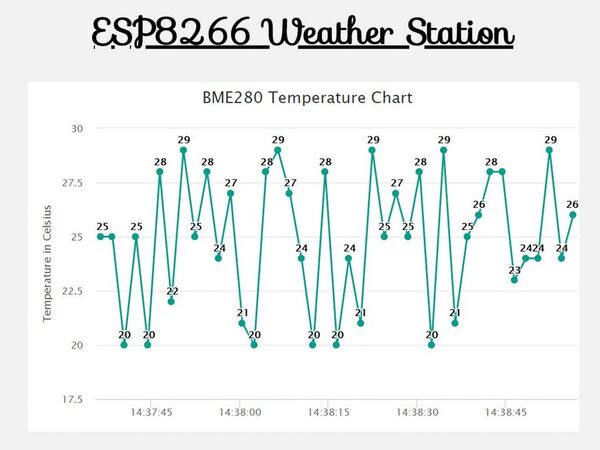
ESP8266 Weather Station with SPIFFS
"In this project, ESP8266 reads the temperature and humidity values from BME280 and plots them as chart on webserver stored on SPIFFS. In this project we use ESP8266 in its ESP8266 in its NodeMCU form factor which reads the temperature and humidity values from BME280 and plots them as chart on webserver. This tutorial would also teach you about the SPIFFS of ESP8266 and its uses and working. What is SPIFFS? SPIFFS is the original filesystem and is ideal for space and RAM constrained applications that utilize many small files and care about static and dynamic wear levelling and don’t need true directory support. Filesystem overhead on the flash is minimal as well." [...]
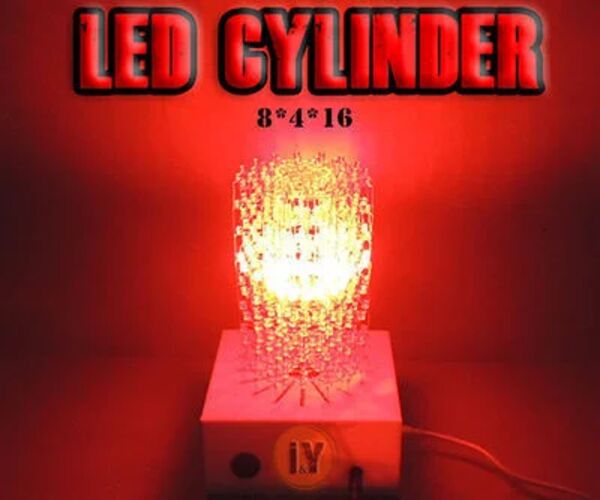
MAKE a HUGE LED CYLINDER 8 X 4 X 16
"Hello guys, In this tutorial, We'r going to show you how to make a DIY Led Cylinder at home. There are many circuits in the internet made with a led. One of them is led cube. The lots of led cubes in our research is quite high. So we wanted it to be a little different. And let's make a cylinder, not a cube." [...]
That's all Folks!



